Text
Moonlighting in Modern India: The Dual Employment Dilemma

In the dynamic context of Indian employee-employer relations, “Moonlighting in India” has been successful in capturing the essence of a shifting work culture. Earlier, a single job was often enough to sustain an individual or even a family. However, as the world evolved, so did the nature of employment. The modern work environment, characterized by its fluidity and adaptability, has seen a significant rise in moonlighting. This phenomenon isn’t just about earning an extra rupee; it’s a reflection of the changing aspirations and capabilities of the workforce.
The term moonlighting, once associated with secretive night jobs, has now expanded to encompass a range of secondary employment opportunities. With the dawn of the digital age, geographical boundaries have blurred, enabling professionals to work for global clients from the comfort of their homes. This has been further pushed by the recent pandemic, which introduced the world to the potential of remote working on an unprecedented scale.
Furthermore, the evolution of work culture has played a pivotal role in this shift. The traditional 9-to-5 job is no longer the only viable employment model. Flexible employment options, freelance opportunities, and gig-based roles have gained prominence. For many, moonlighting is not just about financial necessity but also about pursuing passion projects, diversifying skills, or simply seeking new challenges.
What Does Moonlighting Mean in India
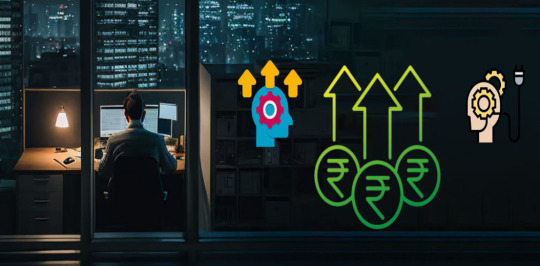
Moonlighting, at its core, refers to the practice of holding a secondary job in addition to one’s primary employment. The term finds its roots in the imagery of working under the moon’s light, often after regular working hours. Earlier, moonlighting was a means to make ends meet, especially during economic downturns or personal financial crises.
The concept of moonlighting is not new. In earlier times, individuals often took up additional tasks or roles to supplement their income. With the Industrial Revolution and the establishment of structured work hours, the term began to signify after-hours work. As economies evolved, so did the reasons for moonlighting. From mere survival, it transitioned to opportunities for skill enhancement, passion projects, and financial growth.
On a global scale, moonlighting has been prevalent in various forms. In developed nations, it often emerges from the desire to pursue varied interests or to achieve specific financial goals. The gig economy, characterized by short-term contracts and freelance work, has further fueled this trend. Platforms like Uber, Airbnb, and Upwork have made it easier for individuals to take up secondary roles that fit their schedules.
In contrast, the Indian context presents a unique blend of factors. While financial necessity remains a driving force for many, the IT boom and the rise of startups have introduced new dimensions to moonlighting in India. The recent surge in remote working opportunities has also played a role, allowing professionals to collaborate with global clients while maintaining their primary roles. However, cultural and corporate perceptions of moonlighting vary, leading to diverse practices and policies across companies.
The Legal and Ethical Implications of Moonlighting

Moonlighting, while prevalent, brings forth a wide range of legal and ethical considerations. From an employer’s perspective, the primary concern often revolves around potential conflicts of interest, confidentiality breaches, and divided employee loyalty.
Legally, the stance on moonlighting varies across jurisdictions. In India, there isn’t a comprehensive legal framework addressing moonlighting for all sectors. Specific industries, like the IT sector, fall outside the umbrella of traditional labour laws that might prohibit dual employment. Instead, the legalities are often governed by employment contracts.
Many companies explicitly mention moonlighting policies in their offer letters, prohibiting employees from taking up secondary employment. Such clauses aim to protect business interests, and intellectual property, and ensure undivided attention to the primary job. This is especially crucial in sectors like fintech where proprietary technology and data are at stake.
However, the enforceability of no-moonlighting clauses can be complex. While companies can set terms of employment, they must also ensure that these terms are fair and not overly restrictive. If challenged, the enforceability might depend on the nature of the secondary job, its impact on the primary role, and any real conflicts or damages caused.
Ethically, the debate around moonlighting is complicated. On one hand, employees have the right to personal time and the pursuit of additional income or interests. On the other hand, moonlighting can raise questions about an employee’s commitment, potential fatigue, and the risk of compromising proprietary information. In sectors like IT, where project-based work is common, moonlighting might be viewed as a breach of trust, especially if the secondary role is with a competitor.
While moonlighting in India is not outright illegal, its acceptance varies across companies. Both employers and employees must navigate this space with clarity, understanding their rights, obligations, and the broader implications of dual employment.
The Prevalence of Moonlighting in the Indian Corporate Space

The Indian corporate landscape presents a diverse view on moonlighting, influenced by factors such as industry type, company size, and organizational culture. While some companies adopt a lenient approach, recognizing the benefits of skill diversification, others maintain strict policies to safeguard business interests.
Indian IT giants, for instance, have been in the spotlight for their stance on moonlighting. With project-based work and client confidentiality at the core, many IT firms prohibit employees from engaging in secondary employment. Such policies aim to prevent potential conflicts of interest, protect intellectual property, and ensure dedicated employee focus. Recent news highlighted instances where IT professionals faced repercussions for undisclosed moonlighting activities, underscoring the seriousness with which some companies view this issue.
However, not all sectors share this rigid view. Startups and newer enterprises, often driven by innovation and agility, maybe more open to employees pursuing side gigs, especially if they align with the company’s vision or contribute to skill enhancement. The rise of the gig economy in India, with platforms like Freelancer, Upwork, and UrbanClap, has also made moonlighting more accessible and prevalent.
The status of moonlighting acceptance in the Indian corporate world is, thus, highly variable. While some companies see it as a potential threat, others view it as an opportunity for employees to grow and bring diverse experiences to the table. The key lies in striking a balance, ensuring that while employees have the freedom to explore, business interests and ethics are not compromised.
Moonlighting Jobs and Their Detection

Read the full article at: https://dsb.edu.in/moonlighting-in-india/?utm_source=tumblr&utm_medium=tumblr&utm_campaign=tumblr+moonlighting
#ai#jobs#banking#education#chatgpt#gpt 4#google#india#blockchain#fintech#moonlighting#job search#jobsearch#jobseekers#jobposting#employment#employees#working#career#work
0 notes
Text
Ethical Hacking: White Hats Making The Digital World Secure

In today’s digital age, the term ‘Ethical Hacking’ is like a safety check. It is a crucial line of defence in our interconnected world. Simply put, ethical hacking is when hackers test computer systems to find and fix weak spots. This has a critical role because we hear about online fraud and phishing attacks all the time.
Ethical hacking is the good side of the hacking world. It’s about diving into systems, not to exploit, but to protect. It’s about wearing the white hat in a realm where not everyone plays by the rules.
Now, let’s break it down a bit. On one side, we have our heroes, the White Hats. These are the ethical hackers, the tech-savvy experts who use their skills to find and fix security gaps. They’re the digital guardians, ensuring our data stays safe and sound.
On the other side, there are the Black Hats. These are the experts with similar skills but different intentions. They’re out to find system loopholes, not to fix them, but to exploit them. It could be for money, fame, or just the thrill, their actions cause real damage.
But somewhere in between, we find the Grey Hats. These hackers might not always ask for permission but they do not necessarily have harmful intentions. They might spot a weakness, sneak in, but then give a heads-up to the organization about the gap they found.
Understanding these different hats is essential. It reminds us of the importance of ethical hacking and the role it plays in keeping our online world a safe place to work.
The Ethical Framework: A Moral Compass
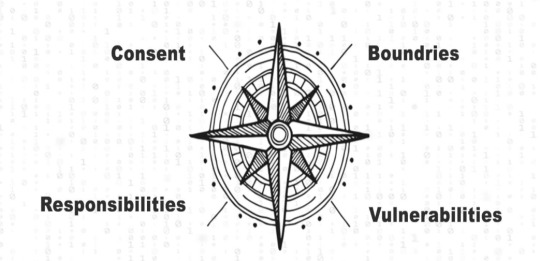
Ethical hacking, by its very name, carries a sense of responsibility. It’s not just about skills, but also about the ethics and principles that guide it. At its core, ethical hacking is about doing the right thing and ensuring that digital spaces are safe for everyone.
Consent is Everything. Ethical hackers don’t just dive into systems on impulse. They seek and have permission. They’re invited to test and explore, ensuring that systems are strong and secure. This separates them from malicious hackers who operate without any permission.
Boundaries are crucial too. Even with permission, there are limits. Ethical hackers respect them, ensuring they don’t overstep or cause unintended harm. They understand the importance of staying within the agreed-upon scope of their work and legalities can’t be ignored.
Ethical hacking might sound like a grey area, but it’s not. There are clear legal frameworks that define what’s acceptable and what’s not. Stepping outside these can lead to serious repercussions.
Ethical hackers work with integrity and report vulnerabilities. They respect client confidentiality and they do not misuse their access. They do not disclose vulnerabilities publicly without consent. And they certainly do not harm the system they’re testing.
The world of ethical hacking is guided by a strong moral compass. It’s a domain where skills meet responsibility, ensuring the digital world remains a safe space for all.
The Ethical Hack: A Step-by-Step Guide

An Ethical Hack is like a detective starting an investigation in a systematic and methodical manner. Let’s follow through this process.
Reconnaissance: This is the initial phase, often linked to a burglar stalking out a house before a heist. Ethical hackers gather as much information as possible about the target system. They look for domain names or IP addresses linked to a company in order to understand the target but from a distance.
Scanning: Now, the hacker gets a bit closer. Think of it as the detective using a magnifying glass to find fingerprints. In this phase, ethical hackers identify open ports or services running on servers. Tools like Nmap or Nessus might be used here. They help in detecting potential vulnerabilities in the system.
Gaining Access: This is the action phase. The hacker tries to exploit the vulnerabilities they’ve found. It’s like the detective finding an unlocked back door. They might use tools like Metasploit to find a way in. It is important to understand ethical hackers have permission and they are testing the locks and not stealing anything.
Maintaining Access: Here, the hacker acts like a spy, trying to create a backdoor for themselves. It’s about seeing if they can remain undetected in the system, highlighting potential risks. Can they stay without the system’s knowledge? If yes, then there’s a problem.
Post-Attack: Once the testing is done, ethical hackers must report their findings. It’s like a detective presenting evidence in court. They detail vulnerabilities found, data accessed, and how long they remained undetected. This information is crucial for strengthening the system further.
Tools and Techniques for Ethical Hacking

In the tech world, tools and techniques are essential. They are what make the process efficient and effective. Similarly, many are used in various stages of hacking.
Scanning Tools: As mentioned, tools like Nmap help hackers scan systems. It’s like a radar, detecting what’s out there. Nessus, on the other hand, is more about vulnerability assessment. Think of it as a health check-up for systems, spotting potential weak points.
Exploitation Tools: Metasploit is a big name here. It’s an application designed to find and exploit vulnerabilities. It’s like a locksmith’s set, helping hackers test every lock.
Password Cracking Tools: Sometimes, hackers need to crack passwords. Tools like John the Ripper or Hydra come into play. They test the strength of passwords, ensuring they are robust enough to keep intruders out.
Wireless Hacking Tools: In our wireless age, tools like Aircrack-ng are vital. They test the security of wireless networks. It’s about ensuring that Wi-Fi networks are as secure as their wired counterparts.
Forensic Tools: Post-attack, tools like Wireshark help in analyzing what happened. They dissect the hack, helping organizations understand and learn from it.
Ethical Hacking is a thorough process. It’s about understanding, testing, and strengthening digital defences. With the right tools and a systematic approach, ethical hackers ensure that the digital world remains a bit safer for all of us.
Why Ethical Hackers Are Essential

For some years, cyber threats have been escalating at an alarming rate. From data breaches to ransomware attacks, the online world faces constant threats. Despite this chaos, ethical hackers emerge as heroes. They’re the first line of defence, proactively identifying vulnerabilities before malicious hackers can exploit them. Their role is not just about finding weak spots but also recommending robust solutions to fortify these digital fortresses.
In 1995, Kevin Mitnick became “the world’s most famous hacker” after hacking codes from tech companies like Nokia, IBM, Microsoft and Motorola. He was once a notorious black hat hacker, who transformed into a white hat, using his skills to help organizations bolster their defenses.
Another instance is the “Heartbleed” vulnerability in OpenSSL. Ethical hackers were instrumental in identifying and mitigating this critical bug, preventing potential chaos.
The Learning Roadmap: Becoming an Ethical Hacker

Thinking about becoming an ethical hacker is similar to setting out on an academic adventure. There is an oversupply of resources available for aspiring hackers. Platforms like Udemy, Coursera, and edX offer courses tailored for beginners and experts alike. For those seeking a structured learning path, certifications like CEH (Certified Ethical Hacker) or OSCP (Offensive Security Certified Professional) provide comprehensive curriculums.
Starting as a beginner, the world of hacking might seem overwhelming. But remember, every expert was once a beginner. The initial steps involve understanding basic cybersecurity concepts, networking, and operating systems and advanced steps include penetration testing, vulnerability assessment, and intrusion detection.
In the hacking community, certifications aren’t just pieces of paper; they’re badges of honour. The CEH certification equips learners with hands-on hacking techniques. GPEN (GIAC Penetration Tester) is another esteemed certification, focusing on penetration testing methodologies. For those seeking a challenge, OSCP is known for its rigorous 24-hour hacking exam. Lastly, CREST provides recognized accreditations in the penetration testing field. These certifications not only enhance knowledge but also open doors to lucrative career opportunities in cybersecurity.
In essence, becoming an ethical hacker is a journey of continuous learning. With the right resources, dedication, and certifications, one can master the art and science of ethical hacking, ensuring the digital world remains a safer place for all.
Is Ethical Hacking Legal?

Read the full article at: https://dsb.edu.in/ethical-hacking/?utm_source=tumblr&utm_medium=tumblr&utm_campaign=tumblr+ethical+hacking
#ai#india#education#chatgpt#google#gpt 4#banking#blockchain#fintech#jobs#ethical hacking#hacking#security#cyber security#technology#infosec#phishing
0 notes
Text
AI in Education: Medium For Learning or Teacher’s Replacement

We stand on the brink of a revolution by Introducing “AI in Education”. The transformative potential of artificial intelligence is not just reshaping industries but is also redefining the way how we educate and learn. From healthcare to finance and from analytics to marketing, AI’s footprint is evident, but its most profound impact might very well be in the classrooms of tomorrow.
The world has witnessed rapid technological advancements in the field of AI in the past few years. Industries have evolved, businesses have transformed, and our daily lives have become intertwined with digital innovations. Among these, AI stands out as a beacon of change, indicating a new era of possibilities. And as it saturates every sector, education emerges as a prime candidate for AI’s transformative touch.
A future where every student gets a personalized learning experience, where educators are empowered with tools of unprecedented precision, and where the boundaries of traditional classrooms are expanded beyond physical walls.
This journey into the world of AI in education is not just about technology. It’s about harnessing its power to create more inclusive, engaging, and effective learning environments. It’s about understanding the vast potential and the challenges, ensuring that as we step into the future, we do so with vision, purpose, and a commitment to excellence.
The Multiple Benefits of AI in Education

The integration of “AI in Education” is not just a technological shift, it’s a revolutionary change that offers a wide range of benefits.
What are the advantages that AI brings to the educational table?
Personalized Learning: One of the most significant breakthroughs AI offers is the ability to tailor educational content to individual student needs. The one-size-fits-all approach days are gone. With AI-driven platforms, students can now receive customized lessons, ensuring that learning is aligned with their pace and style. This personal touch ensures that no student is left behind, and each one gets the optimal learning experience tailored just for them.
Efficiency and Automation: For educators, AI is nothing short of a boon. Routine administrative tasks, which once consumed a significant chunk of their time, can now be automated. From grading assignments to tracking student attendance and performance, AI streamlines these processes, allowing educators to focus on what they do best — teaching.
Enhanced Engagement: The digital-age student is tech-savvy and often seeks interactive and engaging learning experiences. AI offers gamification, virtual reality (VR), and immersive learning experiences. These tools not only make learning fun but also enhance retention and understanding, making education a truly interactive experience.
Support for Diverse Needs: Every student is unique, and so are their learning needs. AI recognizes this diversity and offers tools specifically designed for students with disabilities and different learning styles. Be it speech recognition tools for the differently-abled or adaptive learning platforms for those with learning challenges,
Data-Driven Insights: In the age of information, data is king. AI harnesses the power of data analytics to provide insights into student performance. Educators can now get real-time feedback, identify areas of improvement, and strategize teaching methods to ensure every student achieves their full potential.
The benefits of integrating AI into education are manifold. It’s not just about making processes efficient. It’s about redefining the learning experience, making it more personalized, inclusive, and impactful.
AI’s Role in Rural and Underserved Areas

AI in Education extends beyond the state-of-the-art classrooms in urban centres. Its true potential will shine when it’ll reach the corners of the world where traditional education systems have often stuttered.
How AI is making waves in rural and underserved areas.
Bridging the Educational Divide: For decades, rural areas have fought with challenges like limited resources, fewer qualified teachers, and outdated teaching methods.
AI will emerge as a source of hope in such scenarios. With AI-driven educational platforms, students in remote areas can access high-quality content, interactive lessons, and even virtual tutors. It’s not just about providing education, it’s about ensuring that the quality of education is on par with urban centres.
This democratization of learning is pivotal in levelling the playing field and ensuring that every student, irrespective of their geographical location, has a fair shot at a quality education.
Virtual Classrooms and Remote Learning Opportunities: The concept of a classroom is being redefined. No longer confined to four walls, AI-powered platforms are creating virtual classrooms where students from different parts of the world can come together to learn. These virtual spaces offer interactive lessons, real-time feedback, and even opportunities for collaborative projects. For students in rural areas, this means they can access courses that might not be available in their local schools.
The Teacher and AI: A Collaborative Approach

The Education industry often raises a fundamental question: Will AI replace teachers?
At the heart of every educational journey is the teacher, a guiding force whose impact goes beyond academics. AI, with all its advancements, cannot replicate the human touch, empathy, understanding, and mentorship that teachers provide.
Instead, AI serves as a powerful tool in the hands of educators. It amplifies their capabilities, provides them with resources, and ensures that they can cater to the diverse needs of their students more effectively. The essence of teaching remains human; AI merely provides the tools to make this process more efficient and impactful.
AI Enhances Teacher Capabilities and Reduces Burnout. It is a noble profession, but it’s also one that comes with its set of challenges. Administrative tasks, grading assignments, and managing large classrooms can lead to burnout. This is where AI steps in as a saviour. By automating routine tasks, AI allows teachers to focus on what truly matters which is interacting with students, providing mentorship, and crafting impactful lessons.
Likewise, with AI-driven insights, teachers can identify areas where students might be struggling and tailor their teaching methods accordingly. This not only enhances the quality of education but also ensures that teachers find their roles more fulfilling and less exhausting.
In the grand scheme of education, teachers remain the artists, crafting the future of their students with dedication and passion.
AI, in this scenario, is the brush, the tool that allows them to paint more vividly, ensuring that every student gets a masterpiece of education tailored just for them.
Ethical and Legal Implications of AI in Education

The integration of AI in Education is not without its challenges. As we use the infinite benefits, it’s crucial to address the ethical and legal implications that arise.
Data Privacy Concerns: With AI systems collecting vast amounts of data to provide personalized learning experiences, data privacy emerges as a paramount concern. Schools, institutions, and ed-tech companies must ensure that the data collected is stored securely, and any potential breaches could compromise the personal information of students. It’s not just about securing data; it’s about building trust. Parents, educators, and students need the assurance that their data is used solely for educational purposes and is protected from any misuse.
Unbiased Algorithms: AI systems are only as good as the data they’re trained on. If this data carries biases, AI algorithms can retain and even amplify these biases. In an educational context, this could lead to unfair assessments, misguided learning recommendations, or even discrimination. AI systems in education must be trained on diverse and representative datasets, ensuring that the outcomes are fair and unbiased.
Legal Considerations and the Role of Policy: As AI becomes more integrated into the education system, there’s a pressing need for clear legal frameworks. These frameworks should address issues like data ownership, accountability in case of AI errors, and the rights of students and educators.
Moreover, policies should be in place to guide the ethical use of AI, ensuring that its integration aligns with the core values of education.
Potential Drawbacks and Challenges of AI in Education

Alongside the numerous benefits, there are potential pitfalls and challenges that educators, policymakers, and stakeholders must address.
Dependence on Technology: As classrooms become more tech-centric, there’s a growing concern about over-reliance on technology. While AI-driven tools can enhance learning, they shouldn’t overshadow the fundamental human aspects of education. There’s a risk that students might become too dependent on AI for answers, potentially stifling critical thinking and problem-solving skills. It’s crucial to strike a balance, ensuring that technology complements, rather than replaces, traditional learning methods.
The Risk of Depersonalized Education: One of AI’s strengths is its ability to provide personalized learning experiences. However, if not implemented thoughtfully, there’s a risk of education becoming too mechanized and losing its personal touch. The human connection between teachers and students is irreplaceable and AI should aid this connection, not diminish it. While the lessons might be AI-driven, the human essence of mentorship, guidance, and support remains intact.
Infrastructure and Training Requirements:
Read the full article at: https://dsb.edu.in/ai-in-education-medium-for-learning-or-teachers-replacement/?utm_source=tumblr&utm_medium=tumblr&utm_campaign=tumblr+ai+in+education
#ai#india#fintech#jobs#blockchain#education#banking#chatgpt#gpt 4#google#students#learning#teaching#learn#higher education#educators
0 notes
Text
The Web 3.0 Evolution: The Future Of Decentralized Internet
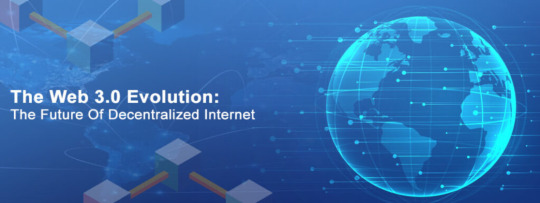
As we stand on the brink of a new era, the term “Web 3.0” is buzzing everywhere for some years now, promising a transformative shift in how we interact with the digital world.
In the early days, the internet was a static network of read-only content, a digital library of sorts. This was Web 1.0, where users were mere consumers of information. Then came Web 2.0, a more dynamic and interactive phase, introducing us to social media, blogs, and user-generated content. It was a significant leap, transforming users into active contributors.
Now, we are transitioning to Web 3.0, often referred to as the semantic or decentralized web. It’s not just an upgrade; it’s a paradigm shift. Web 3.0 aims to create an internet that’s intelligent, context-aware, and tailored to individual user experiences. It’s an internet where users own their data, where information is decentralized, and where digital interactions mirror the complexity and richness of human interactions.
Web 3.0 is characterized by several key features. It leverages artificial intelligence and machine learning to understand and interpret data, making the web more intuitive and personalized. It’s built on blockchain technology, ensuring transparency, security, and user control over personal data. It’s also interoperable, allowing diverse systems and applications to work together seamlessly.
The Technology Behind Web 3.0
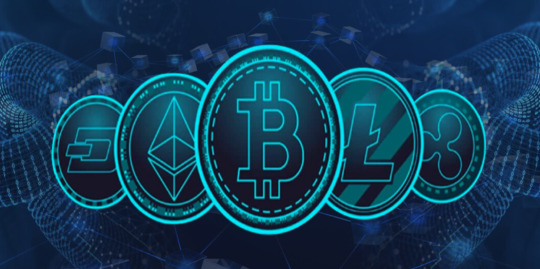
The magic lies in its underlying technology. It’s a blend of advanced tech that works together to create a more intelligent, secure, and user-centric web.
At the heart of 3.0 is blockchain technology. Known as the backbone of cryptocurrencies. Blockchain brings decentralization to the web. It’s a distributed ledger that records transactions across multiple computers, ensuring transparency and security. In the new Web, blockchain enables users to have control over their data, eliminating the need for intermediaries.
Cryptocurrencies serve as the native currency of the Web 3.0 ecosystem. They facilitate transactions, incentivize network participation, and can even represent ownership of digital assets. This integration of blockchain and cryptocurrencies in 3.0 paves the way for a more democratic and equitable digital economy.
Web 3.0 is often referred to as the semantic web. It’s an extension of the current web, designed to enable computers to understand and interpret information just like humans do. The semantic web uses metadata and ontologies to give meaning to data, making it easier for machines to process and analyze information.
Artificial intelligence (AI) plays a crucial role in this context as AI and machine learning algorithms can analyze and learn from the vast amount of data on the web, providing personalized content and experiences. They can understand user behaviour, preferences, and needs, making Web 3.0 a more intuitive and user-friendly space.
One of the defining characteristics of Web 3.0 is decentralization. Unlike the current web, where data is controlled by a few tech giants, Web 3.0 aims to distribute data across the network. This decentralization gives users control over their data, enhancing privacy and security.
In Web 3.0, users can decide who can access their data and for what purpose. They can also monetize their data if they choose to. This shift towards user control is a significant step towards a more democratic and user-centric web.
Understanding Decentralization in Web 3.0
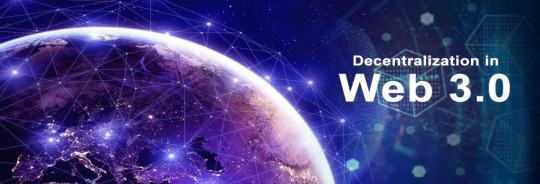
In a decentralized system, there is no central authority that controls or manages the operations. Instead, control is distributed among multiple participants or nodes in the network. Compared to the centralized model of Web 2.0, where a few tech giants control most of the web’s data and services.
Decentralization is achieved through blockchain technology ensuring transparency and security. Each node in the network has a copy of the entire blockchain, making it nearly impossible to alter or forge data.
Benefits and Challenges of a Decentralized Web
A decentralized web offers several benefits, Including:
It enhances privacy and security. Since users control their data, there’s less risk of data breaches and misuse.
It promotes transparency. With blockchain, all transactions are recorded and visible to all participants, making the web more trustworthy.
It enables peer-to-peer interactions. Users can interact directly with each other, without the need for intermediaries.
Despite its benefits, a decentralized web also poses challenges, including:
Scalability is a major issue. As the number of transactions increases, the blockchain network can become slower and less efficient.
The adoption barrier. For many people, concepts like blockchain and cryptocurrencies are complex and difficult to understand. This can hinder the widespread adoption of Web 3.0.
Web 2.0 vs. Web 3.0: A Comparative Look

The transition from Web 2.0 to Web 3.0 is not merely about advanced technology; it’s about a fundamental shift in how we interact with the Web.
User Experience
In Web 2.0, the user experience is largely dictated by the platform. Websites and applications provide a one-size-fits-all experience, with limited personalization. On the other hand, 3.0 aims to deliver a highly personalized user experience. Leveraging AI and semantic technologies, Web 3.0 can understand user preferences and deliver content that’s tailored to every individual user’s needs.
Data Control and Privacy
Web 2.0 is characterized by centralized data control. Tech giants like Google and Facebook store and control user data, often leading to concerns about privacy and data misuse. Whereas, Web 3.0 emphasizes user control over data. Users can decide who can access their data and for what purpose, enhancing privacy and security.
Applications
Web 2.0 introduced us to social media, blogs, and user-generated content. However, these applications are owned and controlled by centralized entities. 3.0 takes it a step further with decentralized applications (dApps). These are applications that run on a peer-to-peer network, rather than a centralized server. dApps are open-source, transparent, and operate with tokens, offering a whole new range of possibilities for digital interaction.
The Shift from Centralized to Decentralized Web
The most significant difference between a centralized to a decentralized web. In Web 2.0, a few entities control the Internet, leading to issues like data monopolies, privacy breaches, and a lack of transparency. Web 3.0 aims to address these issues envisioning an internet where users are in control, data is decentralized, and digital interactions are transparent and secure.
Web 3.0 Applications and Examples
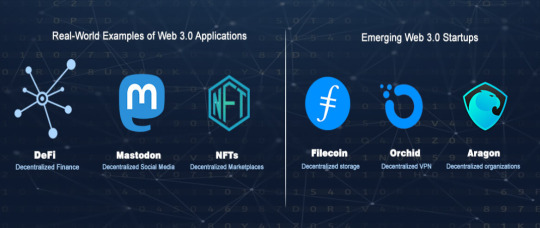
Web 3.0 is not just a theoretical concept, it’s already shaping our digital world in exciting ways.
Real-World Examples of Web 3.0 Applications:
Decentralized Finance (DeFi): They leverage blockchain technology to offer financial services like lending, borrowing, and trading without the need for traditional financial intermediaries. Platforms like Uniswap and Compound are leading examples of DeFi applications.
Decentralized Social Media: Web 3.0 is also transforming social media. Platforms like Minds and Mastodon are decentralized alternatives to traditional social media, giving users control over their data and content.
Decentralized Marketplaces: Web 3.0 has given rise to decentralized marketplaces like OpenSea, where users can trade digital assets and NFTs (Non-Fungible Tokens). These platforms operate on blockchain, ensuring transparency and security.
Emerging Web 3.0 Startups:
Filecoin: A decentralized storage network that allows users to rent out their storage space or buy storage space from others. It’s a promising example of how Web 3.0 can disrupt traditional cloud storage services.
Orchid: A decentralized VPN service that leverages blockchain to ensure privacy and security. Users can buy bandwidth from a global pool of service providers, making the internet more accessible and private.
Aragon: A platform for creating and managing decentralized organizations. It’s a powerful example of how Web 3.0 can transform governance and organizational structures.
Impact of Web 3.0 on Various Sectors

The transformative potential of Web 3.0 extends far beyond the realm of the Internet. It has the potential to disrupt a wide range of industries, from finance and healthcare to education and beyond.
Financial Sector
DeFi applications are enabling peer-to-peer financial services, eliminating the need for intermediaries like banks. For instance, platforms like Compound allow users to lend and borrow cryptocurrencies directly, offering a more transparent and accessible financial system.
Education Industry
AI can analyze a student’s learning style and adapt content accordingly, while blockchain can secure and verify educational credentials. Platforms like ODEM are using Web 3.0 technologies to create a decentralized education marketplace, where students can directly connect with educators.
Marketing Sector
With its emphasis on data privacy and user control, marketers need to adapt to a landscape where meaningful, consent-based interactions are paramount. Decentralization opens avenues for direct, peer-to-peer marketing, bypassing traditional intermediaries. Blockchain can enhance transparency in digital advertising, preventing ad fraud and ensuring fair compensation. An example is Brave, a privacy-focused browser that offers opt-in ads and rewards users with its native cryptocurrency, Basic Attention Token (BAT), embodying a new, Web 3.0-aligned advertising model.
Healthcare Sector
Web 3.0 can enhance data security, privacy, and interoperability. Patients can have control over their health data, deciding who can access it and for what purpose. This can facilitate better data sharing and collaboration among healthcare providers, leading to improved patient care. Companies like MedRec are leveraging blockchain, a key technology of Web 3.0, to secure patient data and enable better data sharing.
Businesses and Individuals
For businesses, It can offer new ways to engage with customers, enhance transparency, and streamline operations. Companies that leverage 3.0 technologies can gain a competitive edge, offering services that are more secure, personalized, and user-centric.
For individuals, It can transform the way we interact with the digital world. It promises a more democratic internet, where users control their data and digital interactions are more secure and personalized. From finance and healthcare to education and entertainment, 3.0 can enhance various aspects of our digital lives.
Web 3.0 and the Metaverse

Read the full article at: https://dsb.edu.in/the-web-3-0-evolution-the-future-of-decentralized-internet/?utm_source=Tumblr&utm_medium=Tumblr&utm_campaign=Tumblr+web+3.0
#tech#web 3.0#decentralized internet#internet#blockchain#india#ai#jobs#fintech#chatgpt#education#gpt 4#google#banking#metaverse
0 notes
Text
Understanding the Challenges of Moving from LIBOR: Navigating the Tides

In the vast ocean of global finance, the London Interbank Offered Rate (LIBOR) stands out. It has long served as a crucial navigational beacon. Established in the mid-1980s, LIBOR quickly became the world’s most widely used benchmark for short-term interest rates. It’s similar to the financial world’s heartbeat. It underpins an estimated $350 trillion worth of financial contracts worldwide. These range from complex derivatives to simple home mortgages.
LIBOR represents the average interest rate for major global banks. They can borrow from one another in the international interbank market for short-term loans. LIBOR is published in five currencies: U.S. dollar, Euro, British pound, Japanese yen, and Swiss franc. It comes in seven different maturities ranging from overnight to one year. This provides a consistent, reliable gauge of the cost of unsecured borrowing in the London interbank market.
The importance of LIBOR in the financial system cannot be overstated. It serves as a reference rate for many financial products. These include syndicated loans, adjustable-rate mortgages, student loans, credit cards, and various types of derivatives. It’s the foundation of the global financial system. It influences borrowing costs throughout the economy. Moreover, it affects the finances of corporations, governments, and consumers alike.
However, LIBOR is the backbone of the financial world. Yet, it doesn’t come without its flaws. The financial world is preparing to navigate a future without it.
The Need for Transition from LIBOR

The journey towards a post-LIBOR world began with a series of unfortunate events. These events shook the financial world to its core. The LIBOR crisis erupted in 2012. It revealed that some banks had been manipulating the rate to their advantage. This led to a crisis of confidence in the benchmark. The scandal tarnished the reputation of LIBOR. It also highlighted its inherent vulnerabilities. One primary concern was that it was based on estimates and not actual transactions. This made it easier to manipulate.
The implications of the crisis were far-reaching. It led to billions of dollars in fines for the banks involved. Additionally, it casts a long shadow over the integrity of the global financial system. In response, it sparked a global conversation. The discussion centred around the need for a more robust and transparent alternative. This alternative needed to withstand the tests of market integrity and reliability.
How Everything Led to LIBOR’s End

In response to the crisis, regulatory bodies worldwide began pushing for a transition away from LIBOR. In the UK, the Financial Conduct Authority (FCA) made an announcement in 2017. It stated it would no longer ask or persuade banks to submit rates for LIBOR’s calculation after 2021. This announcement effectively set the clock ticking for the end of LIBOR.
The final nail in the coffin was in March 2021. The administrator of LIBOR, ICE Benchmark Administration, confirmed the termination dates for most LIBOR settings. It was announced that several LIBOR settings would cease after December 31, 2021. This included all the British pound, euro, Swiss franc, and Japanese yen settings. Additionally, the “one-week and two-month U.S. dollar settings” were included. The remaining U.S. dollar settings would cease immediately after June 30, 2023.
The announcement marked the beginning of the end for LIBOR. It set in motion a significant transition in global finance history. The transition from LIBOR is more than just a regulatory requirement. It’s a crucial step towards a stable and trustworthy financial system.
Challenges in the Transition from LIBOR

Navigating away from LIBOR is no small feat. The transition presents a multitude of challenges that financial institutions and market participants must overcome.
One of the most significant challenges is the complexity of replacing LIBOR in existing contracts, often referred to as “legacy contracts”. These contracts, which can extend beyond 2023, were drafted with LIBOR as the reference rate and often lack adequate provisions for the permanent removal of the benchmark. Modifying these contracts to replace LIBOR with a new rate is an enormous task, both legally and operationally, and raises the potential for legal disputes and market disruption.
The transition also involves the adoption of new risk-free rates (RFRs) that are fundamentally different from LIBOR. Unlike LIBOR, which reflects the credit risk of unsecured interbank lending, RFRs such as the Secured Overnight Financing Rate (SOFR) in the U.S. and the Sterling Overnight Index Average (SONIA) in the UK are nearly risk-free, as they are based on actual transaction data from secure lending markets. This shift from a credit-sensitive rate to a risk-free rate could have significant implications for the pricing and risk management of financial products.
Adding to the complexity is the absence of term structures in the new RFRs. While LIBOR is quoted for different maturities, most RFRs are overnight rates. The development of term rates based on RFRs is still in progress, and until these are widely available and accepted, the transition will remain a challenge.
The impact of the transition extends to various financial sectors and products. From securities, where LIBOR is deeply embedded, to syndicated loans and adjustable-rate mortgages that reference LIBOR, the transition will require significant adjustments. Market participants will need to adapt to new pricing mechanisms, risk management tools, and system changes, all while ensuring minimal disruption to financial markets.
Potential Solutions and Strategies for the Transition
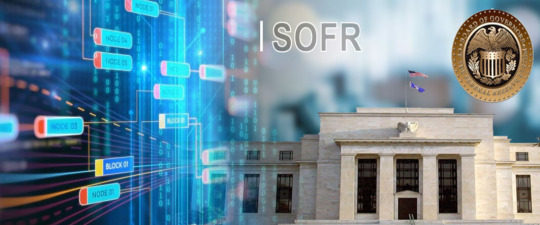
Despite the challenges, the financial world is not walking without a light in this dark transition. Several solutions and strategies are being developed and implemented to navigate the shift from LIBOR. A key part of the solution lies in the development of alternative RFRs.
In the U.S., the Federal Reserve has endorsed the Secured Overnight Financing Rate (SOFR) as the replacement for U.S. dollar LIBOR. SOFR is based on actual transactions in the Treasury repurchase market, making it a more robust and reliable benchmark.
In the UK, the Bank of England has identified the Sterling Overnight Index Average (SONIA) as the preferred alternative to the sterling LIBOR.
These RFRs, along with others being developed around the world, are set to play a pivotal role in the post-LIBOR era.
Another crucial strategy for the transition is the incorporation of robust fallback language in financial contracts. Fallback provisions outline the steps to be taken and the replacement rate to be used if LIBOR ceases to exist. The International Swaps and Derivatives Association (ISDA) has developed a standard fallback protocol, which many market participants have agreed to, providing a clear path for the transition in derivative contracts.
Technology and data also hold the key to managing the transition effectively. Financial institutions are leveraging technology solutions to identify and analyze LIBOR exposure in their contract portfolios. Advanced analytics, fintech solutions and AI are being used to extract and review contractual terms at scale, enabling institutions to manage the transition in a more efficient and risk-controlled manner.
The transition from LIBOR is undoubtedly a complex and challenging process. However, with the right strategies and solutions in place, the financial world can successfully navigate the shift and emerge with a more transparent and robust benchmarking system.
The Impact of the Transition on Global Financial Markets

The ripples of the transition from LIBOR are being felt across global financial markets. This is leading to significant changes and potential disruptions.
One of the most profound impacts is the change in market risk profiles. The shift from LIBOR, a credit-sensitive rate, to nearly risk-free rates changes the dynamics of interest rate risk.
Financial institutions will need to review their risk management strategies. This is because the new rates do not reflect bank credit risk. These rates could also behave differently from LIBOR under various market conditions.
The transition also has a significant effect on interest-rate products and securities. LIBOR is deeply embedded in these markets. Its replacement will require adjustments in pricing, valuation, and risk management of these products. For instance, the shift to SOFR in the U.S. will have effects. It could affect the pricing of interest rate swaps. This is because SOFR tends to be lower than LIBOR due to its nearly risk-free nature.
Moreover, the transition carries the potential for market disruption and legal disputes. The modification of legacy contracts to replace LIBOR could be problematic. It could lead to disagreements over the choice of replacement rate. The adjustment spread might also be a point of contention. This could potentially result in lawsuits. There’s also the risk of market fragmentation. Different jurisdictions or market segments might choose different replacement rates.
The Role of Regulatory Bodies and Financial Institutions in the Transition
Read the full article at: https://dsb.edu.in/understanding-the-challenges-of-moving-from-libor-navigating-the-tides/?utm_source=Tumblr&utm_medium=Tumblr&utm_campaign=Tumblr+LIBOR
#libor#benchmark#uk finance#loans#tech#fintech#india#blockchain#jobs#banking#chatgpt#education#gpt 4#ai#google#investment#altcoin#crypto#defi
0 notes
Text
The Rise of Battery Recycling in India: From Waste to Wealth
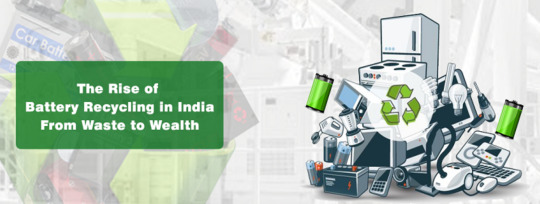
In the age of technology, where batteries power everything from our smartphones to our cars, the importance of battery recycling cannot be overstated. As India stands on the verge of an energy revolution, recycling has emerged as a critical component of the country’s sustainable future.
Recycling batteries is the process of converting used batteries into reusable materials, thereby reducing the need for new raw materials and the environmental impact of waste disposal. It’s a practice that not only conserves resources but also prevents old batteries, which can be toxic and made economically useful, instead of ending them in landfill sites.
India, with its huge population and rapidly growing economy, generates a significant amount of battery waste. The rise of electric vehicles and renewable energy storage solutions has further amplified the need for effective battery recycling. Recognizing this, the Indian government has implemented policies and regulations to encourage the proper disposal and recycling of batteries.
The Need for Recycling Batteries

Recycling Batteries is not just a matter of environmental responsibility; it’s a necessity. The improper disposal of batteries can have severe environmental and economic implications.
Environmental Impact of Improper Battery Disposal
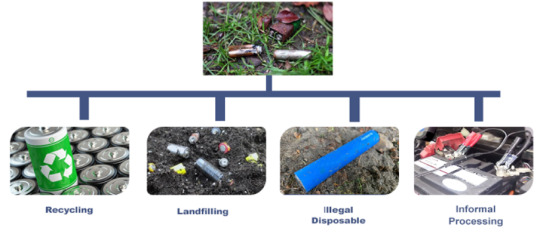
Batteries contain a variety of heavy metals and toxic chemicals, including lead, mercury, cadmium, and lithium. When disposed of improperly, these substances can leak into the soil and water, causing significant environmental harm. This contamination can disrupt ecosystems, harm wildlife, and even pose risks to human health through the contamination of food and water supplies.
Moreover, the improper disposal of batteries contributes to the growing problem of electronic waste, or e-waste. E-waste is one of the fastest-growing waste streams globally, posing a significant challenge for waste management and leading to the loss of valuable resources that could be recovered and reused.
Economic Benefits of Battery Recycling

On the other side, recycling batteries offers substantial economic benefits. The process of recycling recovers valuable materials like lead, nickel, and lithium, which can be reused to manufacture new batteries or other products. This reduces the demand for new and unused materials, leading to cost savings and a lower environmental footprint.
In addition, the battery recycling industry can create jobs and stimulate economic growth. As the demand for batteries continues to rise, particularly with the growth of electric vehicles and renewable energy storage, so does the potential for a thriving battery recycling industry.
In India, the battery recycling sector is still in its infant stages, but it holds immense potential. With the right policies and infrastructure, battery recycling can become a significant industry, contributing to India’s economy while helping to address environmental challenges.
The journey of recycling batteries in India can be a fascinating tale of turning waste into wealth. It can build a story of how a country can leverage policy, technology, and entrepreneurship to transform a challenge into an opportunity.
Indian Government’s Policy on Battery Recycling
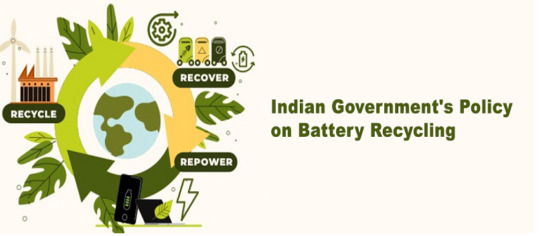
Recognizing the importance of recycling batteries, the Indian government has implemented a series of policies and regulations aimed at promoting responsible battery disposal and recycling.
Overview of the Battery Waste Management Rules 2022
Battery Waste Management Rules 2022 replaces the earlier Battery Management and Handling Rules 2001, providing a unified structure for the management of battery waste in India. They cover all types of batteries and apply to manufacturers, importers, assemblers, re-conditioners, consumers, and recyclers.
The 2022 rules introduce several significant changes, including stricter Extended Producer Responsibility (EPR) obligations, a focus on environmentally sound management of battery waste, and provisions for the formalization of the informal battery recycling sector.
Role of Extended Producer Responsibility (EPR)

Extended Producer Responsibility (EPR) is a policy approach under which producers are given significant responsibility for the treatment or disposal of post-consumer products.
Under the Battery Waste Management Rules 2022, producers are required to ensure that used batteries are collected and sent for recycling in an environmentally sound manner. They are also required to create awareness among consumers about the importance of proper battery disposal.
Government’s Initiatives to Promote Battery Recycling
The Indian government has launched several awareness campaigns, incentives for battery recycling businesses, and research and development programs to improve battery recycling technologies.
Furthermore, the government is also working to strengthen the infrastructure for battery collection and recycling and to formalize the informal battery recycling sector, which currently handles a significant portion of battery waste in India.
The Process of Recycling Batteries
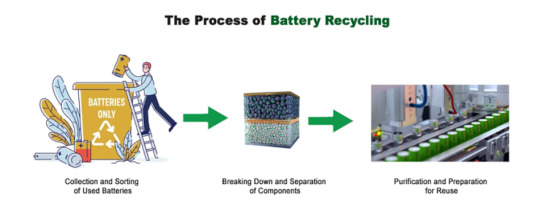
Recycling Batteries is a complex process that involves several stages, each of which plays a crucial role in transforming used batteries into reusable materials. Here’s a closer look at how it works:
Collection and Sorting of Used Batteries
The first step in the recycling process is the collection of used batteries. This can be done through various means, including collection boxes at retail stores, community recycling events, and dedicated battery recycling facilities.
Once the batteries are collected, they are sorted based on their chemistry. Different types of batteries such as lead-acid, nickel-cadmium, and lithium-ion require different recycling processes, so accurate sorting is crucial.
Breaking Down and Separation of Components
After sorting, the batteries are broken down, often through a process called mechanical treatment. This involves crushing the batteries into small pieces, which makes it easier to separate the different components.
The crushed batteries are then separated into different streams. For example, in the case of lead-acid batteries, the lead and plastic components are separated from the electrolyte.
Purification and Preparation for Reuse
The separated materials then undergo further treatment to purify them and prepare them for reuse. This can involve a variety of processes, depending on the type of material.
For example, lead from lead-acid batteries is often smelted and refined to remove impurities, after which it can be used to manufacture new batteries. Similarly, plastic components can be cleaned and converted into pellets for use in new plastic products.
The recycling process not only recovers valuable materials from used batteries but also ensures that potentially harmful substances are managed in an environmentally sound manner.
The Business of Battery Recycling in India

Current State of Battery Recycling Industry in India
As the demand for batteries continues to grow, so does the potential for a thriving battery recycling industry. The Industry of recycling batteries in India is still in its infancy stages, but it’s growing rapidly.
Currently, the industry is dominated by the unorganized sector, which handles a significant portion of battery waste. However, as the market grows, more and more companies will enter the market and invest in advanced recycling technologies.
Major Companies Involved in Recycling Batteries
Several companies are leading the way in recycling batteries in India. These include Gravita India Ltd., a leading lead recycling company, and Attero Recycling, which specialises in e-waste management and recycles various types of batteries. Other players include Ecoreco, which offers solutions for e-waste and battery waste management, and Exigo Recycling, which provides recycling services for electronic waste, including batteries.
Opportunities and Challenges in the Battery Recycling Business
Read the full article at: https://dsb.edu.in/the-rise-of-battery-recycling-in-india-from-waste-to-wealth/?utm_source=tumblr&utm_medium=tumblr&utm_campaign=tumblr+battery+recycling
#waste management#battery#recycling#battery recycling market trend#battery recycling#ai#india#blockchain#fintech#jobs#education#google
0 notes
Text
Decentralized Finance (DeFi): The Future of Fintech
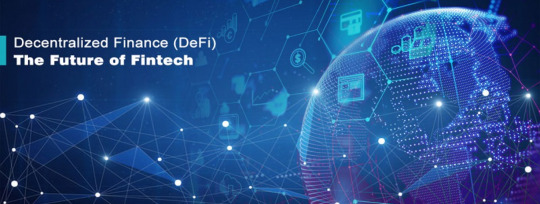
Imagine a world where financial transactions are not governed by centralized banks or intermediaries but are instead managed by a network of individuals. This is the world of Decentralized Finance, or DeFi, a revolutionary concept that is poised to reshape the fintech industry. By leveraging blockchain technology and cryptocurrencies, DeFi offers a new way of conducting financial transactions, from loans to insurance, all transacted directly between individuals.
Understanding DeFi: The New Way of Finance

At its core, DeFi is built on blockchain technology, a decentralized, distributed public ledger where financial transactions are recorded in computer code. This technology enables peer-to-peer transactions, effectively eliminating the need for middlemen such as banks or brokers.
In the DeFi landscape, individuals can lend, borrow, trade, and invest directly with each other.
For instance, instead of depositing savings in a bank that lends it out at a higher interest rate, individuals can lend their savings directly to others, earning the full interest return. This democratization of finance is one of the key advantages of DeFi over traditional finance.
Moreover, DeFi applications, often referred to as “dApps” or protocols, are already being used in a variety of ways. From facilitating traditional financial transactions like payments, trading securities, and insurance, to more complex operations like yield harvesting and flash loans, DeFi is making its mark in the financial world.
DeFi vs Banks: A New Financial Landscape
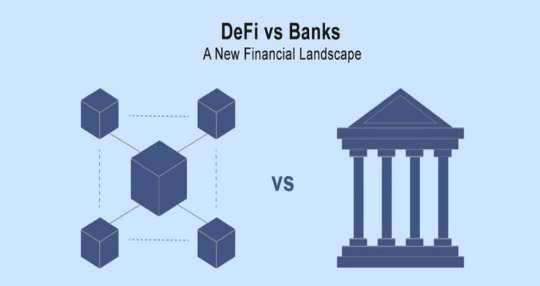
The rise of DeFi naturally raises questions about the future of traditional banks. Will DeFi replace banks? The answer is complex.
DeFi has the potential to offer many services currently provided by banks but in a more transparent and accessible way. However, it’s unlikely to completely replace traditional banking, especially in the short term, due to regulatory, security, and adoption challenges.
Likewise, DeFi is undoubtedly shaping the future of fintech. By offering a more inclusive financial system, it’s paving the way for a new financial landscape where anyone with internet access can participate in financial services, regardless of their location.
The Risks and Challenges of Decentralized Finance (DeFi)
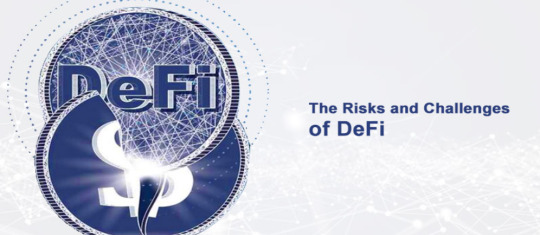
Despite its potential, DeFi is not without risks and challenges. One of the main concerns is regulation. As a relatively new field, DeFi operates in a regulatory grey area. Will it be banned or regulated? This remains to be seen, but it’s clear that regulatory bodies are taking a closer look at DeFi.
Another concern is the risk of scams and hacks. While blockchain technology is secure, other aspects of DeFi, such as smart contracts, are vulnerable to attacks. Furthermore, the high collateral requirements for DeFi loans can limit accessibility, contradicting one of DeFi’s main advantages.
The Potential Impact of Decentralized Finance (DeFi)

Despite these challenges, the potential impact of DeFi is significant. By democratizing access to financial services, DeFi could change the world. It’s not just about financial inclusion, it’s also about empowering individuals and institutions.
For institutions, DeFi can offer a new way to manage financial transactions, reducing costs and increasing efficiency. For individuals, DeFi can provide access to financial services that were previously out of reach, especially for those in unbanked or underbanked regions.
Read the full article at: https://dsb.edu.in/decentralized-finance-defi-the-future-of-fintech/?utm_source=tumblr&utm_medium=tumblr&utm_campaign=tumblr+defi
#defi#decentralized finance#ai#india#blockchain#fintech#jobs#banking#chatgpt#education#google#gpt 4#crypto
0 notes
Text
The U.S. Debt Ceiling and Its Global Implications

Every country’s financial structure houses various integral concepts that dictate its economic narrative. One such pivotal yet complex concept is the ‘debt ceiling.’ Frequently appearing in U.S. financial news, the term ‘debt ceiling’ refers to the maximum limit set by Congress on the amount of national debt that the U.S. government can accrue to meet its financial obligations. The term ‘ceiling’ signifies a limit beyond which the national debt cannot extend.
What is the Debt Ceiling
The debt ceiling functions as a regulatory limit on the amount of national debt the U.S. Treasury can accrue to pay for the expenditures that Congress has already approved. It acts as a checkpoint to monitor and control government spending.
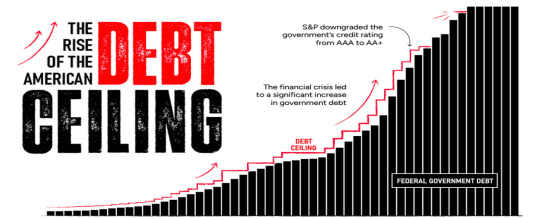
Over the past century, the debt ceiling has been raised or suspended multiple times, each change reflecting the evolving realities and necessities of government spending and borrowing. It’s an interesting dance between policy, spending, and repayment, and an essential cog in the wheel of U.S. financial mechanisms.
Why is the U.S. in Debt and Unable to Repay It?

Over the years, the U.S. has built up a colossal national debt, a daunting figure that’s largely the outcome of varied factors such as heavy government spending, enduring economic crises like the 2008 financial meltdown, the COVID-19 pandemic, and certain tax policies that have influenced the debt scenario.
The complex challenge of repaying this debt is deeply intertwined with the global economic structure’s complexities. While it’s easy to assume that the trade deficit, characterized by a higher import volume than export, contributes to the debt, it doesn’t directly add to the national debt. However, it does play a role in influencing the overall economic health of the nation and indirectly impacts the debt situation.
But, what are the reasons that the U.S. has hit the debt ceiling and is not able to overcome it?
Government Spending: The U.S. government spends substantially on various programs such as defence, healthcare, social security, and interest payments on the national debt. This spending often exceeds the government’s revenues, resulting in a deficit that adds to the national debt.
Economic Crises: Economic downturns often necessitate increased government spending to stimulate the economy and provide relief.
Tax Policies: Tax policies also play a role in the debt scenario. Tax cuts, while potentially stimulating economic growth, can decrease government revenue, thus increasing the deficit if not accompanied by corresponding reductions in government spending.
Interest Payments: As the national debt grows, so does the interest the government must pay on that debt. These interest payments can become a significant part of the budget, leaving less room for other spending priorities and creating a cycle that can cause the debt to grow even further.
Managing and repaying the U.S. debt is a complex issue that involves a careful balance of government spending and revenue, fiscal policy decisions, and managing the country’s economy in the context of a global economic system.
The Size and Scope of U.S. Debt
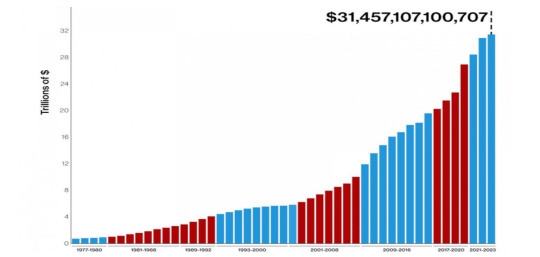
As of 2023, the U.S. national debt stands at a staggering $31.4 trillion, earning the country the status of being the world’s largest debtor.
Where Does the U.S. Borrow From?
The United States acquires debt by issuing Treasury securities like Treasury bonds, notes, and bills. These financial instruments are bought by a wide array of investors, including individuals, corporations, and foreign governments.
Who Are Its Biggest Lenders?
The U.S.’s most substantial debt holders on the international front are Japan and China. Other countries, including the United Kingdom, Brazil, and Ireland, also hold significant portions of U.S. debt. The United States owes Japan approximately $1.28 trillion, while China holds around $1.06 trillion of U.S. debt. The amounts owed to other lenders vary, typically falling into the range of billions of dollars.
Consequences of Hitting the Debt Ceiling

The U.S. hitting its debt ceiling can have significant global implications due to the interconnectedness of today’s global economy.
Here are some potential global consequences:
Impact on Global Markets: The U.S. Treasury market is the largest and most liquid bond market in the world. If the U.S. defaults on its debt obligations, it could cause widespread volatility in global markets. Investors, both domestic and foreign, might start doubting the creditworthiness of the U.S., causing a sell-off of U.S. Treasury securities that could disrupt financial markets worldwide.
Currency Fluctuations: The U.S. dollar is the world’s primary reserve currency, meaning many countries hold it in large quantities to carry out international trade. A U.S. debt default could weaken the dollar, leading to currency fluctuations and economic instability globally.
Global Economic Slowdown: The U.S. economy plays a vital role in driving global growth. Any economic disruption in the U.S., like a recession triggered by a debt default, could have a domino effect on the world economy, potentially leading to a global economic slowdown or recession.
Impact on Foreign Debt Holders: Countries like China and Japan, which hold significant amounts of U.S. debt, could face losses if the U.S. were to default. This could impact their economic stability.
Reduced Confidence in Global Financial System: The U.S. is seen as a global economic leader, and its debt is considered one of the safest investments. A debt default could shake confidence in the global financial system, leading to economic uncertainty and reduced investment.
Potential for Increased Borrowing Costs: If a U.S. default leads to a downgrade in its credit rating, borrowing costs for the U.S. could increase, which could then impact borrowing costs globally. This could make it more expensive for governments, businesses, and individuals worldwide to borrow money.
Here are some potential individual consequences:
In short, the U.S. hitting its debt ceiling and potentially defaulting on its debt repayments could have serious, far-reaching consequences for the global economy. It highlights the need for prudent fiscal policy not only for the U.S. but for economies around the globe. But, what will the citizens of the U.S. face because of hitting its debt ceiling?
The wrangling over the debt ceiling can create economic uncertainty, negatively impacting consumer and business confidence. This can lead to reduced business investments, job cuts, and slower economic growth.
The government might have to make tough choices about which bills to pay. This could put programs like Social Security, Medicare, and military pensions at risk, directly affecting the citizens dependent on these programs.
The uncertainty and the potential for increased government borrowing costs can trickle down to the public in the form of higher interest rates for mortgages, auto loans, student loans, and credit cards.
The debate and uncertainty surrounding the debt ceiling often lead to stock market volatility. This can affect the retirement savings and investment portfolios of everyday Americans.
The Domino Effect: Recession and Layoffs

The repercussions of the U.S. hitting its debt ceiling can go far beyond its own borders, owing to the country’s significant role in the global economy. A notable concern is the potential for a worldwide economic recession and the dreaded consequence – mass layoffs.
As the keystone of global markets, the U.S. economy’s health directly influences financial currents worldwide.
Imagine this: the U.S., unable to lift its debt ceiling, defaults on its debt. This scenario would unsettle financial markets and could seriously undermine investors’ confidence. The ensuing decline in investments can ripple through economies, leading businesses to scale back or shut down, manifesting the dire reality of layoffs.
A U.S. default could also send shockwaves through economies heavily reliant on exporting to the U.S. A debt default could trigger a contraction in the U.S. economy, causing a slump in demand for imports. As a result, these export-dependent economies may see their growth slow down, potentially leading to job cuts in various sectors.
A U.S. debt default could create a ripple effect in global interest rates. As investors’ confidence shakes, they may demand higher returns to compensate for the increased risk, causing a surge in global interest rates. This increase in borrowing costs can hurt businesses and households, leading to a decline in spending, further slowing economic growth, and potentially driving more layoffs.
How Will the U.S. Recover from This Debt?
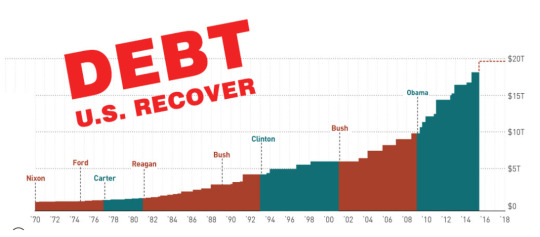
Recovering from such an overwhelming amount of debt is a long-term and complex process. It requires the implementation of severe cost-cutting measures, comprehensive tax reforms, and strategies to stimulate economic growth.
An integral part of this process is maintaining fiscal discipline to prevent uncontrolled debt accumulation. However, these measures must be carefully balanced to ensure that they don’t hinder economic growth or place an unfair burden on the nation’s citizens.
Read more at: https://dsb.edu.in/the-us-debt-ceiling-and-its-global-implications/?utm_source=tumblr&utm_medium=tumblr&utm_campaign=tumblr+us+debt
#USDebtCeiling#GlobalImplications#EconomicImpact#FinancialMarkets#USFiscalPolicy#DebtCrisis#EconomicOutlook#FinancialStability#GovernmentShutdown#GlobalEconomy#USDollar#TradeTensions#MonetaryPolicy#BudgetDeficit#EconomicForecast#india#fintech#jobs#banking#education#google#ai#blockchain
0 notes
Text
Data Protection Bill: Safeguarding Your Digital Identity

In the digital age, data has become the new currency. Every click, every scroll, every search, every online purchase, and every social media post contributes to the vast ocean of data that defines our digital identity. Data Protection Bill safeguards this identity of yours as with the growth of these digital platforms and services, we are sharing more personal data online than ever before. This data can be a gold mine for businesses, offering insights into consumer behaviour and preferences. However, it can also be a source of vulnerability if not appropriately protected, leading to data breaches that can have devastating consequences. This is where the data protection bill comes into the picture.
Data protection refers to the practices, safeguards, and rules put in place to protect your personal information. It’s about respecting an individual’s rights to privacy and ensuring that data is collected, stored, used, and shared in ways that comply with the law and ethical standards. It’s about giving individuals control over their personal information and ensuring that organizations are transparent about how they use this data.
The Evolution of Data Protection Laws in India

India’s journey towards data protection laws has been a dynamic one, marked by significant developments and shifts.
The Introduction of the Bill, 2019
The Data Protection Bill 2019 was a landmark proposal that aimed to set up a unified system for data protection in India. It was designed to address the growing concerns around data privacy and security in the digital age. The bill proposed strict rules for the collection, storage, and processing of personal data, and laid out penalties for violations.
However, the bill also sparked considerable debate. Critics argued that it will give excessive powers to the government, potentially undermining the very rights it sought to protect.
The Withdrawal of the Bill, 2021
In response to the concerns, the bill was withdrawn. This decision was driven by the need to strike a balance between protecting individual privacy, fostering innovation, and ensuring national security. The withdrawal provided an opportunity for further deliberation and consultation, allowing for a more nuanced approach to the complex issue of data protection.
The Data Protection Bill, 2022
The Data Protection Bill 2022 marked a significant step forward in India’s data protection journey. The new bill addressed many of the concerns raised about the 2019 proposal, offering a more balanced approach to data protection.
Key features of the 2022 bill include:
Consent-based data processing: The bill emphasizes the need for explicit consent for data processing, empowering individuals to have greater control over their personal data.
Data localization: The bill mandates that certain types of data must be stored within India while allowing for the transfer of other data under specific conditions.
Data Protection Authority: The bill proposes the establishment of a Data Protection Authority to enforce and regulate data protection laws.
Penalties for violations: The bill includes provisions for hefty fines and penalties for violations, acting as a deterrent for misuse of personal data.
The Impact of the Bill on Various Sectors
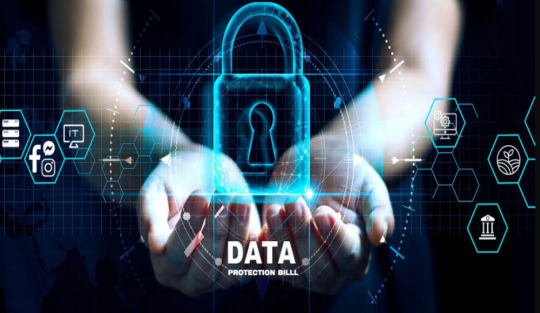
The Data Protection Bill’s impact will be felt across various sectors, from small businesses to multinational corporations, and even from traditional industries to digital platforms.
For businesses, especially those that handle large volumes of personal data will need to ensure that their data-handling practices align with the new regulations, which could involve revamping existing systems and processes.
Social media giants and data-holding companies will be the most impacted as they rely heavily on user data for their operations, and will need to implement robust data protection measures. They’d also need to be transparent about their data practices and ensure that they obtain explicit consent from users before collecting and processing their data.
The bill also introduces stiff penalties for non-compliance, which adds an additional layer of accountability. Businesses will need to take data protection seriously or risk facing hefty fines and damage to their reputation.
The Data Protection Bill is not just for tech companies or businesses in the digital space. It applies to all industries and practices that handle personal data, from healthcare and finance to education and retail. This means that all organizations, regardless of their size or sector, will need to comply with the Bill.
Micro and Macro Perspectives on the Bill
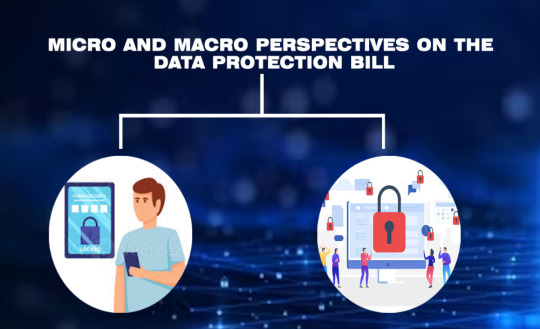
The Data Protection Bill operates on both micro and macro scales, providing a dynamic framework for data protection that caters to individual privacy rights and broader societal needs.
Micro-Level Safeguards
The Data Protection Bill empowers individuals by giving them control over their personal data. It mandates that organizations must obtain explicit consent before collecting and processing personal data.
Individuals will have the right to know why their data is being collected, how it will be used, and who it will be shared with. This bill also provides individuals with the right to access their data, correct inaccuracies, and even request deletion in certain circumstances.
These provisions ensure that individuals are not just passive subjects in the data economy, but active participants with rights and agency.
Macro-Level Safeguards
The Data Protection Bill protects society by setting standards for data handling practices and holding organizations accountable for non-compliance.
It mandates that organizations must implement appropriate safeguards to protect personal data from unauthorized access, disclosure, alteration, and destruction.
The Bill also establishes a Data Protection Authority to oversee and enforce data protection laws. This independent body will have the power to investigate violations, impose penalties, and issue guidelines to promote compliance.
Furthermore, the Act includes provisions for data localization, which require certain types of data to be stored within India. This not only enhances data security but also supports law enforcement and national security efforts.
Data Protection Bill vs. Personal Data Protection Bill

While the terms “Data Protection Bill” and “Personal Data Protection Bill” might seem interchangeable, they represent distinct legislative proposals.
The Data Protection Bill is a comprehensive piece of legislation aimed at safeguarding personal data and regulating its processing. It covers a broad spectrum of data, from personal to sensitive and critical information, and applies to both government and private entities.
On the other hand, the Personal Data Protection Bill is a specific proposal that focuses on the protection of personal data. It emphasizes individual consent, data privacy, and the rights of data subjects. It also proposes the establishment of a Data Protection Authority to oversee and enforce data protection laws.
Embracing the Future of Data Protection
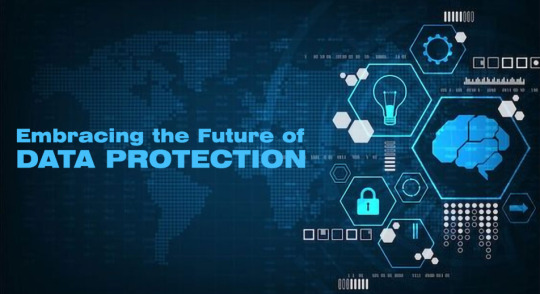
It’s clear that this bill represents a significant milestone in India’s digital journey. The Bill is not just about safeguarding personal data; it’s about fostering trust, promoting transparency, and ensuring that the digital economy is built on a foundation of respect for individual privacy.
The importance of the Data Protection Bill cannot be overstated. In an era where data has become the new currency, protecting personal data
Read more at: https://dsb.edu.in/data-protection-bill-safeguarding-your-digital-identity/?utm_source=tumblr&utm_medium=tumblr&utm_campaign=tumblr+data+protection
#ai#india#blockchain#fintech#chatgpt#jobs#banking#education#google#gpt 4#edtech#data protection#data curation
0 notes
Text
The Role of Vostro Accounts in Facilitating Rupee Trade

In the world of international finance, certain terms and concepts stand out for their significance and impact. Vostro Account is one such term. Originating from the Latin words for ‘yours’, this term refers to accounts held by one bank with another, facilitating international trade and financial transactions. But how does it facilitate the Rupee trade?
Understanding Vostro Accounts
A Vostro account is an account held by a domestic bank on behalf of a foreign bank in the domestic bank’s currency. It enables the foreign bank to access local banking services and conduct transactions in the domestic currency without the need for a physical presence outside its home country. For example, when Bank A from the United States opens an account with Bank B in India, it’s called a Vostro account. Bank A can utilize this account to conduct business and transactions in Indian Rupees, the local currency of Bank B.
Vostro accounts streamline cross-border transactions by allowing banks to provide services in foreign countries without establishing branches there. This improves efficiency and expands banks’ global reach, benefiting customers worldwide.
Vostro accounts often work alongside Nostro accounts, which are accounts held by a domestic bank in a foreign bank’s currency.
The Workings of Vostro Accounts
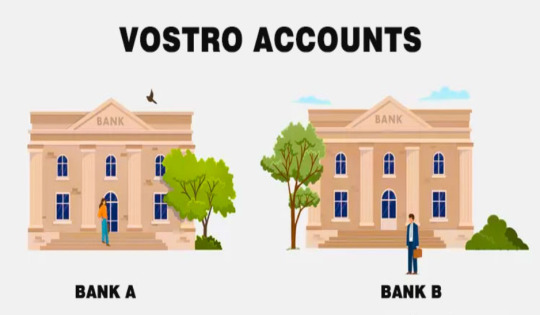
Vostro accounts facilitate international banking through trust and cooperation between local and foreign banks. In this setup, the foreign bank deposits funds into its Vostro account with the local bank, enabling it to perform transactions in the local currency. To maintain transparency, the local bank provides account statements to the foreign bank.
The operations of Vostro accounts involve:
Account Setup: A foreign bank opens an account in the local currency with a domestic bank.
Deposits/Withdrawals: Bank A can deposit or withdraw funds as required for transactions in the local currency.
Transaction Execution: For payments in Indian Rupees, the foreign bank instructs the domestic bank to make payments from the Vostro account. As a result, incoming payments in Rupees are credited to the same account.
Account Maintenance: Domestic bank regularly updates foreign bank with account statements detailing all transactions, fees, or charges for full transparency.
Regulatory Compliance: The operation of Vostro accounts follows local banking rules, as the Reserve Bank of India’s regulations in our case.
The Role of Vostro Accounts in Rupee Trade

Vostro accounts play a crucial role in facilitating the Rupee trade. The Reserve Bank of India (RBI) regulates the Rupee Vostro Account system. Providing a secure and transparent mechanism for foreign banks to conduct transactions in Indian Rupees, thereby reducing their operational costs and overheads.
The functioning of the Rupee Vostro Account system involves three key components: invoicing, exchange rate, and settlement. All exports and imports must be denominated and invoiced in the domestic bank’s currency. The exchange rate between the currencies of the trading partner countries is market-determined, and the final settlement also takes place in the domestic bank’s currency.
Vostro accounts are pivotal in encouraging Rupee transactions, mainly for global banks looking to do business in Indian currency. Here’s how they contribute to the Rupee trade:
Facilitating Transactions in Indian Rupees: Vostro accounts allow foreign banks to hold and manage funds in Indian Rupees. This enables them to conduct transactions in Rupees, including trade finance, investment, and remittances.
Simplifying Cross-Border Trade: By providing a mechanism for foreign banks to transact in Indian Rupees, Vostro accounts simplify the process of cross-border trade with India. Foreign companies can pay for Indian goods and services in Rupees, and Indian companies can receive payments in their local currency.
Reducing Currency Risk: By allowing transactions to be conducted in Rupees, Vostro accounts help to reduce the currency risk associated with foreign exchange fluctuations. This can be particularly beneficial for companies engaged in large-scale or long-term trade contracts.
Promoting the Use of Indian Rupees in International Trade: By facilitating the use of Indian Rupees in international trade, Vostro accounts help to promote the global use of the Rupee. This can contribute to the internationalization of the Rupee and enhance its status as a global trading currency.
Regulatory Compliance: Vostro accounts in India are regulated by the Reserve Bank of India (RBI), ensuring that all transactions comply with Indian banking regulations. This provides a secure and transparent mechanism for foreign banks to conduct transactions in Indian Rupees.
In summary, Vostro accounts play a crucial role in facilitating Rupee trade by providing a secure and efficient mechanism for foreign banks to conduct transactions in Indian Rupees.
Why Would Foreign Nations Embrace the Indian Currency

In the vast landscape of international trade and finance, currency selection plays a crucial role in shaping economic interactions. It’s natural to question why foreign countries would opt to trade using the Indian Rupee instead of their own currency, such as the mighty Dollar or esteemed Dinar, which possess higher valuations.
However, Foreign countries have specific motivations for choosing to trade using the Indian Rupee. Diversification and risk mitigation are key factors, as trading in Rupees helps reduce dependence on a single currency and balances currency exposure. Additionally, engaging in Rupee trade grants access to India’s growing markets and consumer base, strengthening bilateral relations. Competitive pricing advantages and cost competitiveness in certain sectors further contribute to the appeal of the Rupee trade. Overall, foreign nations find value in conducting transactions in Rupees due to diversification, market access, bilateral relations, and potential pricing advantages.
Regulation of Rupee Trade using Vostro Accounts

The Reserve Bank of India (RBI) is the key player in managing the Rupee Vostro Account structure. It is responsible for developing the regulatory framework for these accounts and supervising them to ensure compliance with the set rules. The account initiation process involves securing the RBI’s consent, establishing the account with an Indian bank, and funding the account.
The RBI devises the procedures for foreign banks to establish Vostro accounts with Indian banks, including guidelines on selecting the domestic bank, account opening methods, and necessary documentation. In addition to establishing the accounts, the RBI also keeps a watchful eye on the transactions performed via these accounts, ensuring they do not violate established rules or engage in activities such as money laundering or fraud.
Furthermore, the transactions must follow the Foreign Exchange Management Act (FEMA), which oversees all cross-border financial dealings in India, including regulations related to converting Rupees into foreign currency and vice versa. There is also a mandatory requirement for Indian banks to regularly submit reports detailing Vostro account activities to the RBI, promoting transparency and facilitating fund flow monitoring.
On top of that, the RBI mandates risk management guidelines for these Vostro accounts, encompassing credit risk, market risk, and operational risk.
To sum it up, the RBI’s supervision of Rupee transactions through Vostro accounts fosters secure, transparent, and regulatory-compliant usage. This supervision is pivotal for maintaining the Indian financial infrastructure’s integrity and promoting the use of the Indian Rupee in global trading.
Challenges and Benefits of Rupee Trade

The benefits of the Rupee Vostro Account system are multiple. It eliminates the need for foreign banks to set up a local branch in India, thereby reducing their operational costs. It provides foreign banks with access to the Indian market, enabling them to conduct a wide range of transactions in Indian Rupees. The system simplifies transaction processing, making it easier for foreign banks to conduct business in India. Moreover, it mitigates currency risk by allowing foreign banks to maintain funds in Indian Rupees, thereby protecting them from fluctuations in exchange rates.
Despite its numerous advantages, the Rupee Vostro Account system is not entirely free of challenges. These include the risk of currency fluctuation, regulatory hurdles, and the complexity of international banking transactions. However, these challenges can be mitigated through careful planning and strategic management.
For instance, foreign banks can hedge against currency risk by entering into forward contracts. Regulatory hurdles can be overcome by ensuring compliance with RBI guidelines and international banking norms. The complexity of transactions can be managed by leveraging technology and adopting efficient banking practices.
Real-world Applications of Rupee Trade

The Rupee Vostro Account system has been instrumental in facilitating international trade in Rupees. For instance, the RBI has granted approval for opening 60 special rupees Vostro accounts in domestic and foreign banks in 18 countries, including Russia, Germany, Singapore, Israel, Mauritius, Malaysia, Myanmar and Sri Lanka, to facilitate overseas trade in the Indian currency. This development signifies a significant step in the establishment of a mechanism to settle international trade in the Rupee.
Real-world Applications of Rupee Trade through Vostro Accounts:
Global Trade: Vostro accounts simplify transactions for foreign companies dealing with India. For instance, a US company can easily purchase goods or services from India in Rupees via a Vostro account, streamlining payments and mitigating currency risk.
Overseas Investments in India: Foreign investors can utilize Vostro accounts to invest in Indian businesses or capital markets in Rupees. This simplification boosts their direct involvement in the Indian market.
Remittances: Transfers from abroad to India are facilitated by Vostro accounts. For instance, an Indian in the US can send money home in Rupees using a Vostro account.
Trade Agreements: Countries have developed unique Rupee Vostro accounts to ease bilateral trade. For example, the Reserve Bank of India sanctioned Rupee Vostro accounts in domestic and foreign banks in Russia, Singapore, and Sri Lanka, promoting trade in Indian currency.
Advancing Indian Rupee in Global Trade: Vostro accounts, by enabling transactions in Rupees, promote its use in international trade, contributing to the Rupee’s global currency status.
The Future of Rupee Trade and Vostro Accounts

Looking ahead from a fish-eye view, the Rupee Vostro Account system holds immense potential for the future of international trade. As more countries recognize the benefits of trading in Rupees, the demand for Rupee Vostro Accounts is likely to increase. Technological advancements, such as blockchain technology, could further streamline the operation of these accounts, making them even more efficient and secure. In the long run, the Rupee Vostro Account system could play a pivotal role in establishing the Indian Rupee as a global trading currency.
India’s economy is one of the fastest-growing in the world, and this growth is expected to continue in the future. As the Indian economy grows, so too will the demand for Rupee trade and the use of Vostro accounts.
There is a growing push to increase the use of the Indian Rupee in international trade. Vostro accounts will play a crucial role in this process, as they allow foreign banks to hold and transact in Indian Rupees. Regulatory bodies like the Reserve Bank of India continue to evolve their policies to keep pace with changes in the global financial landscape. Future regulatory developments could impact the operation of Vostro accounts and their role in the Rupee trade.
In conclusion, the future of the Rupee trade and Vostro accounts looks bright. As the world continues to globalize and the Indian economy continues to grow, the demand for efficient and secure systems for international Rupee transactions will only increase. Vostro accounts, with their ability to facilitate these transactions, are set to play a pivotal role in this future landscape.
0 notes
Text
India’s Green Hydrogen Mission: Path to a Greener Future

The Green Hydrogen Mission is a national initiative in India that aims to establish the country as a global hub for green hydrogen production, usage, and export. The mission involves promoting research and development in green hydrogen technologies, building necessary infrastructure, and creating a supportive policy and regulatory environment for the growth of the green hydrogen industry. The mission is a part of India’s strategic transition towards a sustainable and greener future.
What is Green Hydrogen?

Green hydrogen is hydrogen gas produced through renewable energy sources like solar, wind, or hydropower using a process called electrolysis. Electrolysis involves passing an electric current through water, causing the water molecules to separate into hydrogen and oxygen. This carbon-free method distinguishes green hydrogen from grey and blue hydrogen, which are derived from fossil fuels. Grey hydrogen is produced from natural gas without carbon capture and storage (CCS) technology, while blue hydrogen uses CCS to reduce carbon emissions. As a sustainable and environmentally friendly alternative to traditional fossil fuels, green hydrogen is expected to play a significant role in future energy systems.
How Green Hydrogen Works?
Producing green hydrogen requires electrolyzers powered by renewable energy sources. These devices use electricity to split water molecules into hydrogen and oxygen while capturing the hydrogen. Green hydrogen can be stored in high-pressure tanks, metal hydrides, or liquid organic hydrogen carriers (LOHCs), which enable safe and efficient storage.
Transportation of green hydrogen primarily relies on pipelines, trucks, and ships, with ongoing research into new methods to improve efficiency, reduce costs, and minimize environmental impacts.
The Future of Green Hydrogen

Green hydrogen holds substantial potential as a clean and sustainable energy source, with applications spanning from fuel for transportation to power generation and industrial processes.
As a crucial component in the global energy transition, green hydrogen aims to reduce greenhouse gas emissions and decrease dependence on fossil fuels. However, its widespread adoption depends on addressing challenges in production, storage, and transportation, alongside ensuring economic viability.
With technological advancements and an increasing focus on renewable energy sources, green hydrogen is expected to play a more significant role in the future. Experts predict that green hydrogen could supply up to 25% of the world’s energy needs by 2050, paving the way for a cleaner and more sustainable future. Additionally, green hydrogen can help countries achieve their climate targets under the Paris Agreement, further emphasizing its importance in the global fight against climate change.

The mission focuses on research, development, and large-scale adoption of green hydrogen, aiming to harness India’s vast renewable energy potential and support the nation’s energy transition.
Key players in India’s green hydrogen industry include Larsen & Toubro, Tata Power, and Indian Oil Corporation, among others. These companies are investing in research and development, production facilities, and partnerships to strengthen India’s position in the global green hydrogen market. The mission also encourages the development of domestic manufacturing capabilities for electrolyzers, helping to boost local industries and create employment opportunities.
Applications of Green Hydrogen
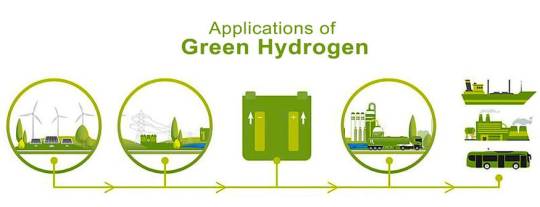
The versatility of green hydrogen makes it an attractive energy solution for various sectors. Some of its primary applications include:
Transportation: Green hydrogen can be used as a clean fuel in fuel cell electric vehicles (FCEVs), including cars, buses, and heavy-duty trucks. FCEVs generate electricity from hydrogen through a chemical reaction with oxygen, producing water vapour as the only emission. This makes them a promising alternative to traditional internal combustion engine vehicles, reducing greenhouse gas emissions and air pollution.
Aviation and Maritime: The aviation and maritime industries are exploring green hydrogen and its derivatives, such as ammonia and methanol, as alternative fuels. These industries face unique challenges in reducing emissions due to the energy density requirements of long-distance travel. Green hydrogen and its derivatives can help them achieve their sustainability goals and contribute to global efforts to combat climate change.
Power Generation: Green hydrogen can complement intermittent renewable energy sources like solar and wind by providing stable and reliable power during periods of low generation. When the energy demand is higher than the available renewable energy supply, green hydrogen can be converted back into electricity through fuel cells or gas turbines. This enables efficient energy storage and utilization, promoting the integration of renewable energy into the grid.
Industrial Processes: Green hydrogen can be used as a feedstock in energy-intensive industries, such as steel and cement production. By replacing fossil fuels with green hydrogen, these industries can reduce their carbon footprint and contribute to global emissions reduction targets. Green hydrogen can also serve as a feedstock for producing ammonia, methanol, and other chemicals, fostering a greener chemical industry.
Challenges and Opportunities in Green Hydrogen

Despite its immense potential, the green hydrogen industry faces several challenges that must be addressed to ensure its widespread adoption and success. Some of these challenges include:
Production Costs: Currently, green hydrogen production costs are relatively high compared to traditional fossil fuels like petrol and diesel. The costs are more than 4–5 times higher. The cost of electrolyzers, renewable energy infrastructure, and other components required for green hydrogen production contributes to its higher price. To overcome this challenge, investments in research and development are needed to improve production technologies and reduce costs.
Storage and Transportation: Storing and transporting green hydrogen presents unique challenges due to its low energy density and the need for high-pressure or cryogenic storage systems. Ongoing research in storage technologies, such as metal hydrides and LOHCs, aims to address these challenges and develop more efficient, cost-effective solutions.
Infrastructure Development: The widespread adoption of green hydrogen requires the development of extensive infrastructure, including production facilities, pipelines, refuelling stations, and more. Governments and private investors must collaborate to fund and construct the necessary infrastructure, creating an environment that supports the growth of the green hydrogen industry.
Policy and Regulation: As a young industry, green hydrogen requires supportive policies and regulations to encourage investment, research, and adoption. Governments must implement policies that incentivize green hydrogen production and use, such as tax breaks, subsidies, and carbon pricing, to accelerate the transition to a green hydrogen economy.
Despite these challenges, the green hydrogen industry presents numerous opportunities for growth and innovation. The potential to transform the energy sector, reduce greenhouse gas emissions, and contribute to a more sustainable future makes green hydrogen an attractive prospect for governments, businesses, and investors. By working together to address the challenges and capitalize on the opportunities, the world can create a thriving green hydrogen industry that benefits people, the economy, and the environment.
Requirements for the Success of India’s National Green Hydrogen Mission
Need for Public Awareness and Engagement
Green hydrogen offers a promising pathway to a cleaner and more sustainable energy future. By addressing the challenges and harnessing the opportunities, the world can realize the full potential of green hydrogen and make significant strides in combating climate change. Education, public awareness, and engagement are essential components of this journey, empowering individuals and communities to contribute to the global effort to build a greener, more prosperous future.
Need for Investment and Financing
The green hydrogen industry requires significant investments to achieve its potential. Governments, private investors, and financial institutions must come together to provide the necessary capital for green hydrogen projects, including research and development, infrastructure construction, and skills training.
Public-private partnerships can be an effective way to mobilize investments and share risks, making green hydrogen projects more attractive to investors. Additionally, governments can use financial instruments such as grants, loans, and guarantees to support green hydrogen initiatives.

Green hydrogen has the potential to revolutionize the global energy landscape by offering a…..
To read the full article: India’s Green Hydrogen Mission: Path to a Greener Future
#ai#gpt 4#fintech#banking#education#chatgpt#google#blockchain#jobs#india#sustainability#green hydrogen#ecofriendly
0 notes
Text
The Social Dilemma: Dark Side of Social Media

We’re living in a world where scrolling through social media feeds has become as habitual as breathing. The eye-opening Netflix documentary “The Social Dilemma” emerges as a cautionary tale that uncovers the hidden realities behind our favourite online platforms. It delves into the depths of the social media abyss, exploring the dark side of social media and the invisible strings that pull at the minds and hearts of users worldwide. As we become entangled in the web of likes, comments, shares, subscriptions and retweets, it is imperative to reflect on the potentially harmful consequences they can have on individuals and society as a whole.

Addiction is a significant concern when it comes to social media use. These platforms are designed to be addictive, creating a dopamine-driven feedback loop that keeps users hooked.
“There are only two industries that call their customers ‘users’: illegal drugs and software.” – Edward TufteZ
Renowned American Statistician and Professor
According to studies, excessive use of social media can lead to increased rates of depression, anxiety, and loneliness. The constant comparison to others and the pressure to maintain a perfect online image can lead to low self-esteem and negative self-perception.
These Social Media sites have their own algorithms that show users content they are more likely to agree with and interact with, which can lead to the reinforcement of existing beliefs and the amplification of extreme opinions. Polarization and the decline of respectful conversations can be attributed to social media algorithms that create echo chambers.
The spread of misinformation and fake news on social media has become a significant problem, contributing to the public’s mistrust of traditional media and institutions. The platform’s algorithms prioritize engagement, inadvertently promoting sensationalist and misleading content.
The personal data of users is collected and monetized by social media platforms, as they gather information about their interests, preferences, and online behaviour. This data is then sold to advertisers, who use it to create targeted ads that cater to the specific desires and needs of each user. This practice raises concerns about privacy, as individuals may not be fully aware of the extent to which their data is being used and shared. Furthermore, the use of personal data for targeted advertising opens the door for potential manipulation, as advertisers and platforms can influence users’ purchasing decisions and even their opinions on various topics.
“If you’re not paying for the product, you are the product.” –Shoshana Zuboff
Author of “The Age of Surveillance Capitalism”

The Documentary talks about “The attention economy”, which monetizes users’ time and attention, leading to the development of addictive platforms that prioritize engagement over well-being.
It also delves into the algorithms that influence users’ behaviour and beliefs. These algorithms are designed to predict and manipulate users’ interests, creating a personalized online experience. This customization comes at the cost of ethical concerns, as it can exploit vulnerabilities and manipulate emotions.

Our journey into the digital abyss takes an intriguing turn when we consider the rise of artificial intelligence (AI). Notable figures in the tech world and beyond have expressed their apprehensions about the pervasive spread and potential misuse of AI technologies.
Geoffrey Hinton, the acclaimed pioneer of AI, has expressed his fears concerning AI’s unchecked growth. He cautions that as AI systems become more powerful and autonomous, they could potentially be used maliciously, leading to devastating effects. Hinton suggests that AI, if unregulated, could enable oppressive surveillance, enhance the spread of misinformation, or even facilitate autonomous weapons. The ‘Godfather of AI’ urges for safeguards and ethical guidelines to prevent such possible misuse and to ensure that the technology is employed to benefit humanity.
US President Joe Biden, acknowledging these concerns, summoned top tech executives including Google’s Sundar Pichai and Microsoft’s Satya Nadella to discuss AI’s safety mechanisms and to tackle the rising threats posed by this rapidly advancing technology. The goal was clear: to ensure the tech giants are taking necessary precautions against the potential dangers of AI and to establish more robust regulations to protect the public from AI-induced risks.
The world of finance is not oblivious to the rising power of AI. Legendary investor Warren Buffet has compared AI to an “atom bomb” due to its potential destructive capabilities. Buffet’s apprehensions stem from AI’s power to outperform humans in various tasks, its autonomy, and the potential for it to be exploited for harmful purposes. Despite these concerns, Buffet acknowledges the transformative potential of AI, especially in industries like healthcare and automotive.
AI, like social media, represents a powerful tool that holds both immense promise and potential threats. As users of technology and as a society, it’s crucial to stay informed, critical, and demanding of ethical considerations in these fields. As we navigate through this new age of AI, let’s tread with caution, but also embrace the potential benefits and transformations AI can bring about.

Following the release of “The Social Dilemma,” the public response was significant, leading to a broader conversation about the role of social media in society. Social media giants, including Facebook, have been forced to address concerns raised in the documentary.
In response to the film, Facebook published an article titled “What The Social Dilemma Gets Wrong,” which attempted to counter some of the documentary’s claims and highlight the steps the company has taken to address user concerns.
Facebook argued that the documentary misrepresented certain aspects of its platform, such as the company’s commitment to combating misinformation and protecting user privacy. Facebook also highlighted the steps they have taken to address user concerns, such as implementing changes to their algorithms and developing new tools to promote user well-being.

This eye-opening documentary has started important discussions about the ethical issues and social impact of our online activities. By revealing the hidden forces that control these platforms, the film….
To read the full article: https://dsb.edu.in/the-social-dilemma-dark-side-of-social-media/?utm_source=Tumblr&utm_medium=Tumblr&utm_campaign=social+dilemma
#social media#dilemma#netflix#facebook#social dilemma#ai#india#jobs#blockchain#google#education#banking#gpt 4#fintech#chatgpt#politics#saas technology#tech#technology
0 notes
Text
An Insight into SaaS & BaaS: Revolutionizing Everything From Cloud to Cash

Digital transformation is no longer a buzzword. It has become a reality, a necessity. In this rapidly evolving technological landscape, businesses are tirelessly trying to remain agile, innovative, and customer-centric. In this endeavour, Software as a Service (SaaS) and Banking as a Service (BaaS) have emerged as powerful platforms, driving the next wave of the digital revolution.
What is SaaS?
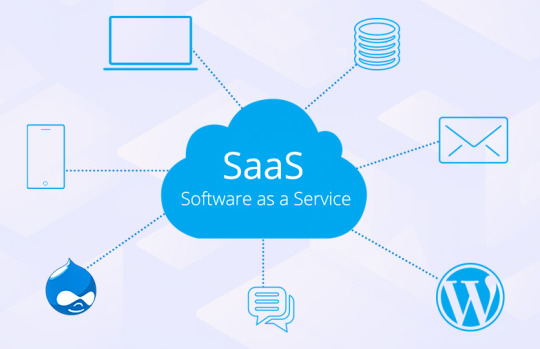
Software as a Service (SaaS), is a kind of cloud computing that provides users with access to software applications over the Internet. These applications are hosted on a cloud and managed by the service provider, relieving users from the need to install, manage, or update the software on their local servers or computers.
Why is SaaS the Future and Why is it Used?
The potential of SaaS stretches far beyond ease of use. By eliminating the need for hardware acquisition, provisioning, and maintenance, it significantly reduces upfront costs. Flexible payments make it an affordable solution for businesses of all sizes. It also provides scalable usage, allowing companies to scale up or down based on their requirements.
Moreover, automatic updates ensure users always have access to the latest features and security measures. Its accessibility from any internet-connected device makes it a perfect fit for today’s remote working culture. Given these advantages, it is no surprise that SaaS is being hailed as the future of software delivery.
SaaS Integration and the SaaS Business Model
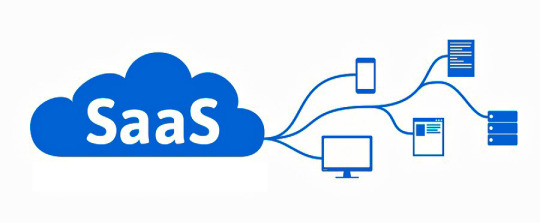
SaaS platforms are designed for seamless integration into the existing IT infrastructure. It enables businesses to focus on their core competencies, leaving software-related issues to the SaaS provider.
The SaaS business model primarily relies on subscription-based revenue, with clients paying a fixed amount periodically to access the service. This ensures a steady revenue stream for providers and makes budgeting easier for clients.
On-Premise Vs SaaS: Why SaaS is Superior?
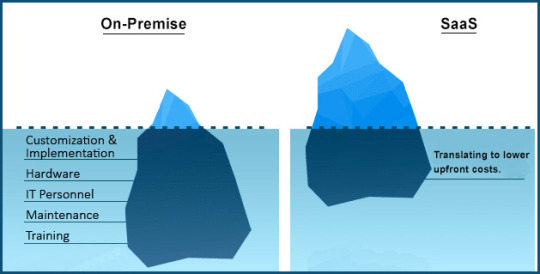
On-premise software comes with substantial initial costs, including hardware, software licenses, and installation, not to mention the ongoing costs of maintenance, updates, and IT staff.
SaaS, on the other hand, is subscription-based, translating to lower upfront costs. The fact that it is maintained by the service provider further eliminates the need for maintenance and IT staffing costs. Also, SaaS solutions are scalable, customizable, accessible from anywhere, and always up-to-date, making them the superior choice for most businesses.
SaaS Products and Companies we all know
The SaaS market is crowded with many players, each one offering its unique value proposition. Top global SaaS companies include Salesforce, known for its customer relationship management (CRM) software; Adobe, with its creative and multimedia software suite; Microsoft, offering a range of productivity tools and business solutions; and Google, with its robust G Suite of Office applications.
The Role of IaaS and PaaS along with SaaS
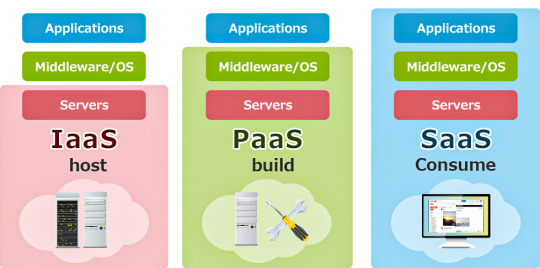
In the cloud computing realm, SaaS is one of the three primary service models, along with Infrastructure as a Service (IaaS) and Platform as a Service (PaaS).
IaaS virtualized computing resources over the internet. IaaS provides physical and virtual resources that are used to build a cloud. These resources include servers, network hardware, storage, and data center space. Users can rent these resources as per their needs, thereby saving on the capital expenditure that would have been incurred if they were to set up their own infrastructure. Amazon Web Services (AWS), Google Cloud Platform, and Microsoft Azure are some of the examples of Iaas.
PaaS delivers a platform for users to develop, run, and manage applications without the complexity of building and maintaining the infrastructure typically associated with application development. The PaaS provider manages the responsibility of housing the software and hardware components on their own infrastructural setup. As a result, developers can focus more on writing the code and the business logic, and less on managing hardware, software updates, and other routine IT management tasks. Examples of PaaS include Google App Engine, Heroku, and IBM Cloud Foundry.
SaaS delivers software applications over the web. IaaS provides virtualized computing resources over the Internet, and PaaS provides a platform for the creation and deployment of applications. Together, these models comprise the backbone of cloud computing, each serving distinct purposes but also complementing each other.
SaaS Uses in Different Sectors
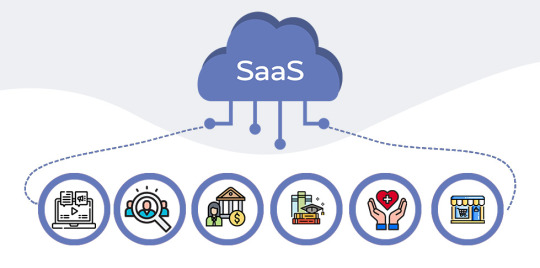
Digital Marketing
Marketing teams leverage SaaS to automate tasks, streamline workflows, create content and improve campaign effectiveness. SaaS tools assist in email marketing, social media management, customer relationship management (CRM), and various forms of analytical tracking. These tools enable marketers to measure campaign effectiveness, user engagement, and return on investment in real time.
Human Resource
HR professionals use SaaS for recruitment processes, streamline employee onboarding, assist in performance tracking, and even manage payroll. The advantage of these solutions lies in their ability to centralize data, allowing for seamless management and offering employees user-friendly self-service options. This promotes HR efficiency and boosts employee satisfaction.
Financial Sector
HR professionals use SaaS for recruitment processes, streamline employee onboarding, assist in performance tracking, and even manage payroll. The advantage of these solutions lies in their ability to centralize data, allowing for seamless management and offering employees user-friendly self-service options. This promotes HR efficiency and boosts employee satisfaction.
Education Sector
In education, SaaS facilitates online learning, course management, and collaboration among students and teachers. By providing extensive learning resources and a platform for interactive learning, SaaS tools enhance both teaching methodologies and the overall learning experience.
Healthcare
SaaS in healthcare provides numerous benefits, from improving patient care to optimizing operational processes. Electronic Health Records (EHR) systems, telehealth platforms, patient portals, and medical billing software are common SaaS applications in healthcare. They help streamline workflows, improve data accessibility, and ensure regulatory compliance.
Retail
In the retail sector, SaaS solutions offer a multitude of tools to improve both the customer experience and the retailer’s operations. E-commerce platforms, inventory management systems, Customer Relationship Management (CRM) tools, and analytics software are some of the SaaS solutions used in this sector. They help businesses optimize their supply chain, gain customer insights, and manage their online presence effectively.
What is BaaS?
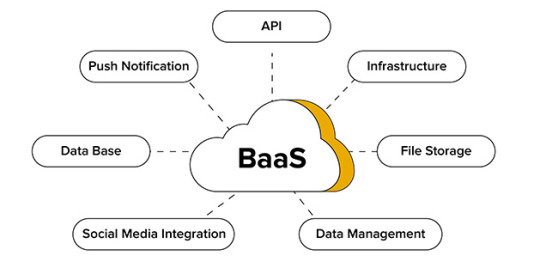
Banking as a Service (BaaS) is a model where financial services capabilities are provided over the Internet via APIs. With BaaS, fintech companies, retailers, and other businesses can integrate banking services into their own products, without the need to establish a full-fledged bank.
Why is BaaS the Future of Banking?
BaaS holds the promise of a more inclusive and innovative financial services sector. Enabling non-banks to offer financial services, encourages competition, promotes innovation and potentially leads to better services for consumers. As customer expectations evolve, the demand for integrated, seamless financial services will only grow, making BaaS an increasingly attractive proposition.
How Does BaaS Work and How is it Used?
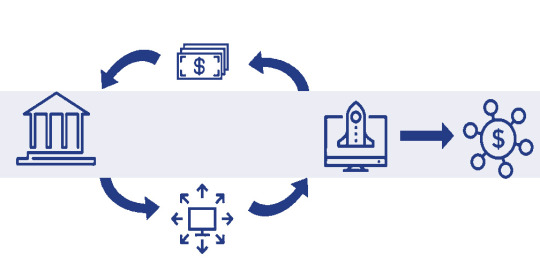
BaaS operates through APIs, which allow third parties to access banking services such as payments, transfers and account management on their platforms. Managed by a licensed bank, this infrastructure saves businesses from building complex banking functions from scratch.
Primarily utilized by fintech firms, BaaS facilitates services like digital wallets, payment gateways, and lending platforms. As we all know there is no finance without technology nowadays. This synergistic integration of existing platforms provides a smooth and convenient customer experience. Any business can leverage BaaS to integrate banking services, differentiate itself in the market, and enhance customer service.
BaaS Integration with Other Technologies
BaaS can be integrated with other technologies such as artificial intelligence, machine learning, and blockchain to offer advanced financial solutions. For example, AI can be used for personalized banking services, machine learning for predictive analysis in lending decisions, and blockchain for secure, transparent transactions. These integrations enhance the capabilities of BaaS platforms, opening up new paths for innovation.
The Intersection of SaaS and BaaS

SaaS and BaaS are both service-based models, delivering…..
To read the full article: https://dsb.edu.in/an-insight-into-saas-baas-revolutionizing-everything-from-cloud-to-cash/?utm_source=tumblr&utm_medium=tumblr&utm_campaign=Saas+and+BaaS
#ai#jobs#india#blockchain#chatgpt#gpt 4#fintech#education#google#banking#saas#saas technology#saasmarketing#saas solutions#b2b saas#automation#baas#financial#investing#finance
0 notes
Text
What Are Regulatory Sandboxes: Fostering Fintech Innovation and Stability

The Reserve Bank of India (RBI) launched the regulatory sandbox in 2019 to support and foster innovation in the fintech industry while ensuring consumer protection and financial stability.
A regulatory sandbox is a special program created by the government to help new and innovative businesses in the financial technology (fintech) industry test their ideas in a safe and controlled environment. It allows these businesses to experiment with new products and services without having to worry about meeting all of the usual rules and regulations. This helps these businesses to see if their ideas are successful, and it also helps the government to make sure that customers are protected and the financial system remains stable. Think of it like a playground where fintech businesses can try out new things and play without getting into trouble.
The concept of regulatory sandboxes in India originated from the Inter-Regulatory Working Group on FinTech and Digital Banking, which recommended the creation of a sandbox in 2016. Whereas, The RBI published its first framework for a regulatory sandbox in 2019.
Since then, the RBI has launched four cohorts (segments) of the regulatory sandbox. In the first cohort, ten fintech companies were selected for testing. The second and third cohorts were focused on fintech solutions for financial inclusion and digital identity verification, respectively. The fourth cohort, launched in 2021, focused on mitigating financial fraud.
The Insurance Regulatory and Development Authority of India (IRDAI) launched a regulatory sandbox in 2021 for the insurance industry. Insurers were granted the opportunity to experiment with novel products, services, and business models within a carefully regulated environment, thanks to the implementation of the sandbox.
The Ministry of Agriculture and Farmers Welfare is also exploring the possibility of a regulatory sandbox for the agricultural sector. The sandbox will aim to promote innovation in agricultural technology, improve access to finance for farmers, and boost rural entrepreneurship.
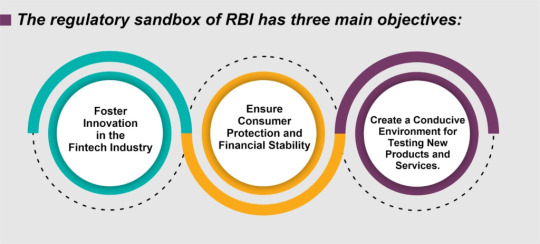
The application process for the regulatory sandbox of RBI involves three stages, which are Expression of Interest (EOI), Fit and Proper Assessment, and Selection of Participants. It has several key features, including limited regulatory requirements and exemptions, a well-defined testing period, continuous monitoring and evaluation, and a well-defined exit strategy.
The eligibility criteria to be considered for the regulatory sandbox, include being a registered company in India, having a minimum net worth of INR 50 lakh, a product or service that is innovative and has the potential to address a gap in the market, and a clear testing plan with a well-defined exit strategy.
Why should a fintech company be interested in a Regulatory Sandbox:
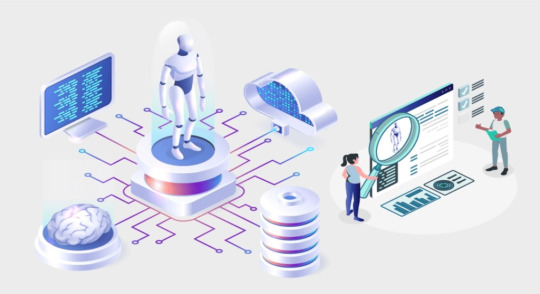
It provides a safe space for fintech companies to experiment with new technologies and business models, promoting innovation in the industry. This can lead to the development of new, more efficient products and services that can benefit consumers and businesses alike.
Its framework provides a controlled environment for testing new products and services, allowing companies to identify and mitigate potential risks before launching them in the market. This can reduce the risk of failure and increase the chances of success for fintech companies.
It can help fintech companies to reduce the time to market their products and services. The controlled testing environment allows companies to quickly identify and resolve any issues that may arise, allowing them to launch their products and services faster.
Despite their many benefits, regulatory sandboxes also face several challenges, including:

The risk of regulatory arbitrage, where companies take advantage of the relaxed regulatory requirements in the sandbox to engage in activities that would not be permitted outside of it. This can pose a risk to consumer protection and financial stability.
Regulatory sandboxes require effective monitoring and evaluation to ensure that they achieve their objectives while mitigating the associated risks. This can be challenging, as it requires a balance between promoting innovation and ensuring consumer protection and financial stability.
Regulatory sandboxes provide an opportunity for banks to collaborate with fintech firms and leverage their innovative technologies and business models to……
To read the full article: What Are Regulatory Sandboxes: Fostering Fintech Innovation and Stability
#fintech#rbi#banking#sandbox#startups#ai#india#jobs#blockchain#google#education#gpt 4#chatgpt#innovation#funding#marketing#sales
0 notes
Text
More Professionals Showing Intent to Upskill This Year

Every professional agrees with the statement that they want to grow more and more with no point in their mind where they would say that they have grown enough and now they can just relax. In today’s world, being relaxed is not an option. Everything around us is changing at a pace we can’t even lay our eyes on one thing for too much time as it’ll be then replaced with something better. To keep up with this ongoing transitional world upskilling has become crucial for growth and success.
The rapid pace of technological change, globalization, and economic uncertainty has created an environment where employees need to continually update their skill sets to remain competitive as upskilling can lead to increased job opportunities, higher salaries, and personal growth.
A report by Great Learning on the latest upskilling trends has just revealed that 83% of Indian professionals intend to upskill this year. This percentage has been increasing every year highlighting the increasing need to stay up-to-date with the latest industry trends and technologies.
A recent PwC report emphasizes the urgency of upskilling, revealing that one in three jobs is likely to be severely disrupted or disappear in the next decade due to technological change. This could affect almost half of all low-skilled jobs and a third of semi-skilled jobs. In response to this, PwC is committing $3 billion to upskill globally over the next four years, with close to $10 million allocated to develop digital skills in Singapore over the next two years.
Deloitte’s report on reskilling the workforce highlights that reskilling, upskilling, and outskilling are key strategic priorities for many organizations. Professionals are seeking to acquire both soft skills such as leadership, communication, teamwork, adaptability, creativity, time management, problem-solving, and emotional intelligence, and technical skills like cloud computing, artificial intelligence (AI), cybersecurity, data analytics, and digital marketing.

Most of those professionals intend to upskill for increased salaries, higher career growth, and acquire additional technical expertise. IT and BFSI were the top sectors where professionals upskilled themselves last year, and Bengaluru was in the highest demand for upskilling programs. Whereas among tier-2 cities, Mysore, Madurai, Indore, and Vijayawada showed the highest intent for upskilling.
Upskilling helped 43% of professionals to gain career growth in their organization, 23% to switch to a different domain, and 18%………
Read the full article at: https://dsb.edu.in/more-professionals-showing-intent-to-upskill-this-year/?utm_source=Tumblr&utm_medium=Tumblr&utm_campaign=Upskilling
#ai#blockchain#chatgpt#jobs#fintech#india#gpt 4#banking#education#google#upskill#professional#monitor
0 notes
Text
Smarter Machines, Smarter Humans? Evolution of Technology from Books to Bytes
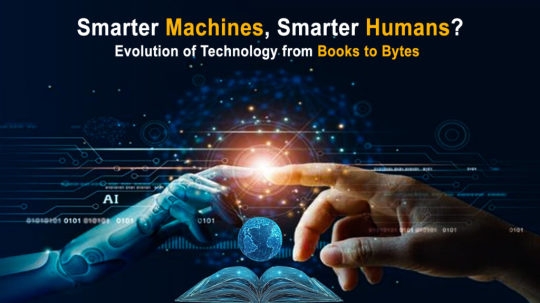
In today’s rapidly evolving world, the great impact of the Evolution of technology is undeniable. It has transformed numerous industries, revolutionizing the way we live and learn. In education, digitization and AI-powered tools enhance learning. Telecommunications benefit from faster networks like 5G. The automotive sector advanced with self-driven cars. Healthcare using AR and AI-powered systems. Technology has impacted all sectors, reshaping our world.
The Education Sector

In the education sector, technology has initiated a new era of learning. Digitization and accessibility of information have democratized education, making knowledge readily available to learners of all backgrounds. Artificial Intelligence (AI) has paved the way for personalized learning experiences, tailoring educational content to individual students’ needs. Moreover, virtual reality (VR) and augmented reality (AR) have created immersive educational environments, enabling students to explore subjects in unprecedented ways.
Technology in education extends beyond the classroom. Online learning platforms, e-books, and educational apps offer flexible and accessible learning opportunities. Distance education and remote learning have become possible through video conferencing and online collaboration tools.
The benefits of technology in education are backed by research. Studies have shown that integrating technology into the classroom improves student outcomes, increases motivation, and enhances critical thinking skills. It also fosters collaboration among students and encourages creativity and problem-solving abilities.
The Telecommunication Industry

The telecommunication industry has witnessed remarkable advancements, transitioning from 2G to the era of 5G networks. This evolution has brought faster and more reliable connections, revolutionizing global communication. The potential of 5G technology extends beyond improved browsing speeds from less than 10 Kbps to now more than 330 Mbps; it has the power to transform industries, enabling real-time data transfer, supporting autonomous vehicles, and enhancing user experiences through seamless connectivity.
The potential impact of 5G technology is immense. It holds the key to transforming industries such as healthcare, logistics, entertainment, and more. In healthcare, for example, real-time remote patient monitoring can become a reality, enabling healthcare providers to monitor patients’ vital signs from a distance and respond promptly to emergencies. In the logistics industry, 5G can optimize supply chain management, enabling real-time tracking of goods, improving efficiency, and reducing costs.
The Automotive Industry

Technology has revolutionized the automotive industry, bringing self-driving cars from concept to reality. Tesla, a leading electric vehicle manufacturer, showcases the potential of this transformation. Their Autopilot system utilizes advanced sensors, cameras, and AI algorithms to enable autonomous driving.
Self-driven cars offer enhanced safety features, reduce traffic congestion, and contribute to environmental sustainability. They can analyze road conditions, respond to hazards, and significantly reduce accidents caused by human error. Moreover, these vehicles optimize traffic flow and offer energy-efficient transportation. Studies predict a significant reduction in accidents and saved commuting time with their adoption.
These cars can also contribute to addressing traffic congestion issues. Through advanced algorithms and data analysis, these vehicles can optimize traffic flow, reducing bottlenecks and improving overall efficiency. The implementation of self-driving car networks can potentially result in smoother traffic patterns, shorter travel times, and reduced emissions.
Data from various studies support the potential impact of self-driving cars. For instance, a study conducted by McKinsey & Company estimated that by 2030, self-driving cars could reduce traffic accidents by up to 90% and save approximately 30,000 lives each year in the United States alone.
The Healthcare Sector

Technological advancements have propelled the healthcare sector to new heights. Through AR, surgeons can overlay digital information onto the patient’s anatomy, offering real-time guidance during complex surgeries. This technology allows for more precise and accurate surgical interventions, leading to better patient outcomes and reduced risks. AI-powered healthcare systems have improved the accuracy of diagnoses and treatments, enabling more efficient patient care. Additionally, remote patient monitoring and telemedicine advancements have expanded access to healthcare services, particularly in underserved areas.
Studies have demonstrated the effectiveness of AR in surgical training, reducing surgical errors, and improving patient safety. AI-powered systems have shown potential in accurately diagnosing various diseases, predicting treatment outcomes, and optimizing patient management.
The Tech Industry

The tech industry continues to be at the forefront of innovation. Artificial Intelligence (AI) and machine learning have paved the way for groundbreaking applications, ranging from voice assistants to autonomous systems. Natural Language Processing (NLP) and the advent of models like GPT-4 and Google Bard have propelled language understanding to new levels, transforming how we interact with technology. Furthermore, blockchain technology has revolutionized secure transactions and decentralized systems, offering transparency and trust in various domains.
The Media and Entertainment Industry

The entertainment and media industry has undergone a profound transformation due to technology. Streaming platforms have revolutionized content consumption, providing on-demand access to an extensive library of movies, TV shows, and music. Services like Netflix, Amazon Prime Video, and Spotify have transformed the world of entertainment, giving users the flexibility to choose what they want to watch or listen to at any time. Virtual reality experiences have elevated gaming and entertainment, immersing users in virtual worlds.
Data-driven content creation and personalized recommendations have become integral parts of the entertainment experience. With the help of algorithms and analytics, streaming platforms can analyze user preferences, viewing habits, and demographic information to curate personalized recommendations. This not only enhances user satisfaction but also introduces viewers to new content they might not have discovered otherwise.
The Energy and Environmental Sector

The impact of technology extends beyond industries; it permeates our daily lives and personal interactions. It has reshaped communication, enabling instant global connectivity and fostering virtual communities. The job market has undergone significant shifts, with digital skills becoming increasingly essential for success. Technology has democratized access to knowledge, empowering individuals to learn, grow, and collaborate on a global scale. However, the rapid advancement of technology also brings forth challenges and ethical considerations. Issues such as data privacy, security, and the digital divide must be addressed to ensure that technology benefits all members of society.
Technology’s Influence on Society and Individuals

Technology plays a pivotal role in the pursuit of a sustainable future. Renewable energy technologies have made significant strides, enabling the generation of clean power from sources like solar and wind. Smart grids and energy management systems optimize energy distribution and consumption, fostering efficiency. Internet of Things (IoT) enabled devices to facilitate energy monitoring and environmental conservation, empowering individuals and organizations to make informed choices for a greener world.
Future Trends and Possibilities
Predicting the trajectory of technology is an exciting endeavour. Artificial Intelligence (AI) will continue to expand its reach, revolutionizing…..
To read the full article: https://dsb.edu.in/smarter-machines-smarter-humans-evolution-of-technology-from-books-to-bytes/?utm_source=medium&utm_medium=medium&utm_campaign=Technology
#ai#india#jobs#blockchain#chatgpt#fintech#banking#education#google#technology#tech industry#tech#gpt 4#technically#computers#web#gadgets
0 notes
Text
Understanding Cryptocurrency: Valuation, Blockchain and Workings
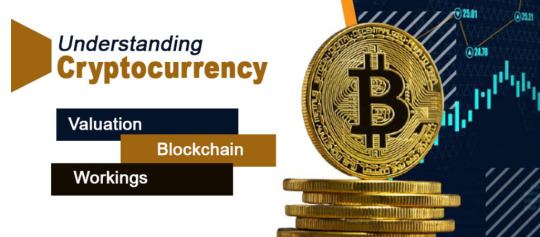
What Is Cryptocurrency?
Cryptocurrency is a kind of digital asset utilizing cryptography’s advanced encryption techniques to protect transactions and control the creation of new units. It functions independently from central banks and serves various purposes, including online shopping, investing, and even as a store of value.
These digital currencies operate on a decentralized network supported by a user community. This network is commonly known as a blockchain, a digital ledger of all transactions related to a particular cryptocurrency.
How Does It Work?
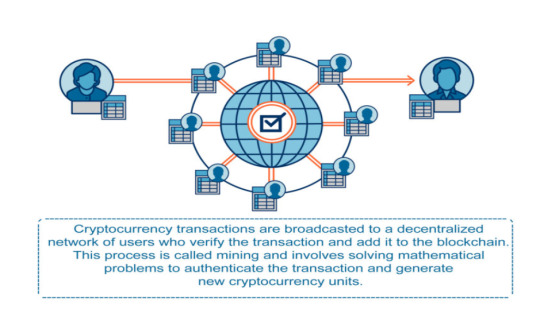
When a user initiates a transaction, the network of users broadcasts it to verify the transaction and include it in the blockchain. This process, called mining, involves solving intricate mathematical problems to authenticate the transaction and generate new cryptocurrency units.
Once a transaction is verified, it is added to a block, which is subsequently added to the blockchain. Each block in the chain carries a unique code or hash, produced through a cryptographic function. This ensures that each block is connected to the previous one in the chain, rendering the blockchain tamper-proof and secure. This process demands substantial energy and computing power, resulting in high production costs.
Understanding Blockchain:

Blockchain is a decentralized record-keeping ledger that securely and transparently logs transactions. It uses cryptography to protect and validate transactions before adding them to the blockchain as blocks. Once added, blocks cannot be altered or deleted, making the ledger secure and resistant to tampering.
Imagine blockchain as a towering stack of Lego bricks. Each block lists transactions, representing a Lego piece, and every block is connected to the one beneath it, just like a Lego stacked over another. Once added, blocks cannot be removed or modified, similar to how a Lego piece in the middle of the stack cannot be removed or changed once connected.
Various types of blockchain technologies exist, including public, private, and hybrid blockchains. Public blockchains, such as Bitcoin, are open to everyone, while private blockchains are restricted to specific users or organizations. Hybrid blockchains incorporate features from both public and private blockchains.
How Is Cryptocurrency Valued?
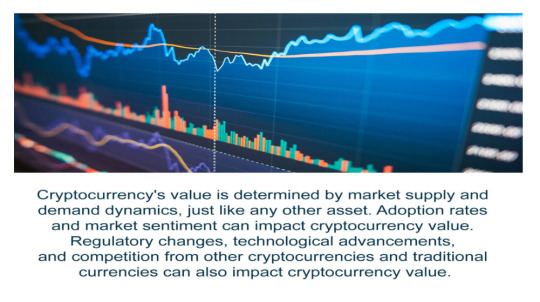
The market’s supply and demand dynamics determine a cryptocurrency’s value, much like any other asset. When more people buy than sell, the price increases, and when more people sell than buy, the price decreases.
Several factors influence their values. Adoption rates are crucial in determining a cryptocurrency’s value. As more people use a cryptocurrency, its demand increases, driving up the price. Market sentiment also affects cryptocurrency value, with positive sentiment leading to higher prices and negative sentiment leading to lower prices. Regulatory changes, technological advancements, and competition from other cryptocurrencies and traditional currencies can impact cryptocurrency value. It’s essential to research and understand these and other factors thoroughly before investing in cryptocurrencies.
Journey of Cryptocurrency in India

Cryptocurrency has evolved significantly in India since its inception. The Reserve Bank of India issued a warning against using cryptocurrencies in 2013, but the government didn’t officially declare cryptocurrencies as non-legal tender until 2018. Despite this, the cryptocurrency industry continued to grow in India, with many individuals and companies investing in it.
In 2021, the government proposed a new Crypto Bill that would effectively ban all private cryptocurrencies and establish a central bank digital currency (CBDC) called DigiRupee. However, the bill hasn’t been passed into law yet, and various stakeholders oppose it.
In 2022, the government proposed a new Finance Bill that includes a flat 30% tax
on the transfer of virtual assets, including NFTs and cryptocurrencies. To accommodate this, a new Section 115BBH was added to the Income-tax Act, 1961.
As a result, there is now a 30% tax, plus a surcharge and cess on the transfer of any virtual digital asset (VDA) such as Bitcoin or Ethereum under the Income Tax Act, of 1961. However, the legal status of cryptocurrencies remains uncertain.
Currently, cryptocurrencies in India are unregulated. The government has, however, started cracking down on illegal activities involving cryptocurrencies, such as money laundering and tax evasion.
Despite the ambiguity surrounding cryptocurrencies in India, many believe they have the potential to revolutionize the financial industry in the country. Cryptocurrency adoption could lead to increased financial inclusion and access to financial services for millions of people.
The Fall of FTX

The fall of FTX, a cryptocurrency exchange, has raised concerns about the stability and regulation of the cryptocurrency market. FTX filed for bankruptcy due to insufficient reserves to meet customer demand. The collapse has also affected academia, depriving researchers of grants and raising fears of forced repayment. Despite this setback, cryptocurrency continues to evolve globally, including in India, where the legal status of cryptocurrencies remains uncertain. Bitcoin, Ethereum, Dogecoin, and Binance Coin are some of the notable cryptocurrencies that have impacted the industry. Bitcoin and Ethereum differ in purpose and supply, but both are decentralized and rely on secure, transparent blockchains.
Downfall of Cryptocurrency

In 2022, the cryptocurrency market faced another major downturn, with many leading cryptocurrencies experiencing substantial drops in value. For example, Bitcoin, the largest and most well-known cryptocurrency, saw its value fall by over 50% from its all-time high in November 2021. Ethereum, another popular cryptocurrency, saw a similar decline, falling by approximately 40% from its peak. The total market capitalization of the cryptocurrency market also suffered a significant decline, losing over $1 trillion in value. Despite these setbacks, the industry continues to grow and evolve, with many investors and enthusiasts remaining optimistic about the potential of cryptocurrencies to revolutionize the financial landscape. As with any emerging market, it is important for investors to stay informed and understand the risks involved in investing in cryptocurrencies.
Notable Cryptocurrencies
1. Bitcoin: The first and most popular cryptocurrency, created in 2009 by an anonymous person/group using the pseudonym Satoshi Nakamoto. It operates on a decentralized network and uses a proof-of-work consensus algorithm.
2. Ethereum: a platform that operates in a decentralized manner and allows developers to build decentralized applications and execute smart contracts. Created in 2015 by Vitalik Buterin, it uses a proof-of-stake consensus algorithm and its own programming language, Solidity.
3. Dogecoin: A meme-inspired cryptocurrency created in 2013 by Billy Markus and Jackson Palmer. It features the Shiba Inu dog from the famous “Doge” meme and has gained a large following due to its community-driven and lighthearted nature
4. Binance Coin: A cryptocurrency created by the Binance exchange in 2017 means of exchange, while Ethereum was created as a platform for decentralized applications and smart contracts. This difference has resulted in the two cryptocurrencies having specific use cases and valuations.
Bitcoin vs Ethereum: Which one is Better?
Bitcoin and Ethereum are two renowned cryptocurrencies that have significantly impacted the development of the crypto industry. They differ in purpose and supply, but both are decentralized and rely on secure, transparent blockchains. Their values are driven by market forces and are prone to price changes.
Bitcoin utilizes a public blockchain, allowing anyone to join the network by running a node or mining Bitcoin. Transactions are confirmed by a network of nodes that verify the transaction and add it to the blockchain, creating a distributed ledger that records all Bitcoin transactions, ensuring security and transparency.
Ethereum, on the other hand, operates on a blockchain that enables developers to create decentralized applications and smart contracts. These applications function on the Ethereum Virtual Machine (EVM), a decentralized platform that runs code on the blockchain.
While Bitcoin was primarily designed as a store of value and medium of exchange, Ethereum was developed as a platform for decentralized applications and smart contracts. This distinction leads to different use cases and valuations for the two cryptocurrencies.
Bitcoin has a limited supply of 21 million coins, projected to be mined by 2140. In contrast, Ethereum’s supply is unlimited, with new coins generated through mining.
Despite their differences, Bitcoin and Ethereum share some common ground. Both are decentralized and function on secure, transparent blockchains. They are also subject to market dynamics, with their values determined by supply and demand.
In recent years, both cryptocurrencies have experienced notable price fluctuations. For instance, Bitcoin hit an all-time high of nearly $64,800 in April 2021, only to face a sharp decline in the following months. Likewise, Ethereum reached an all-time high of over $4,815 in November 2021 before undergoing a correction as well. Currently, the value of Bitcoin is $28,143 and Ethereum is $1,877.19.
Read more at: https://dsb.edu.in/understanding-cryptocurrency-valuation-blockchain-and-workings/?utm_source=Tumblr&utm_medium=Tumblr&utm_campaign=Cryptocurrency
0 notes